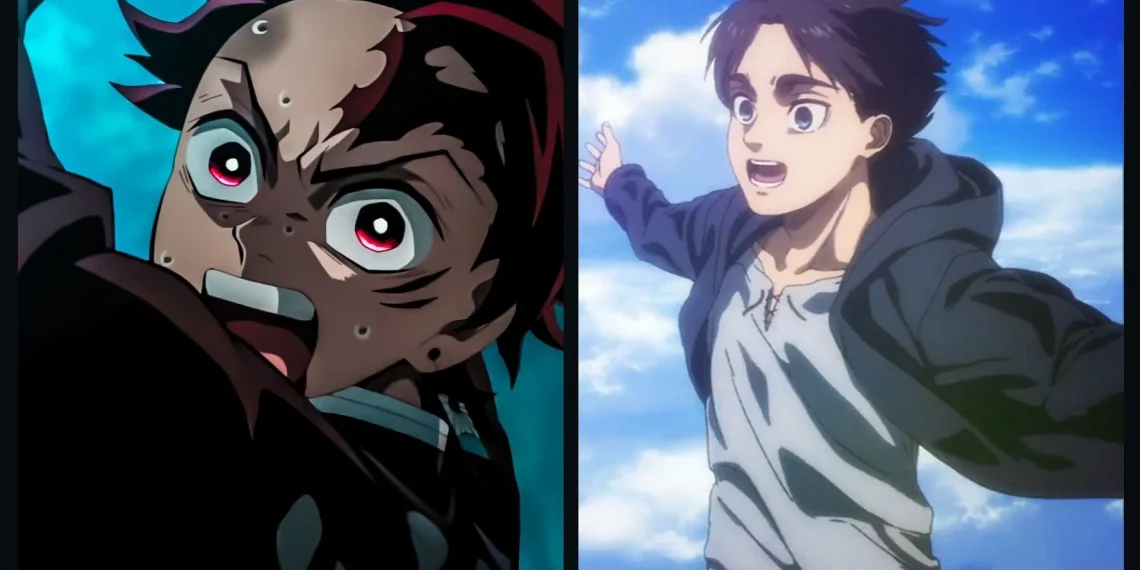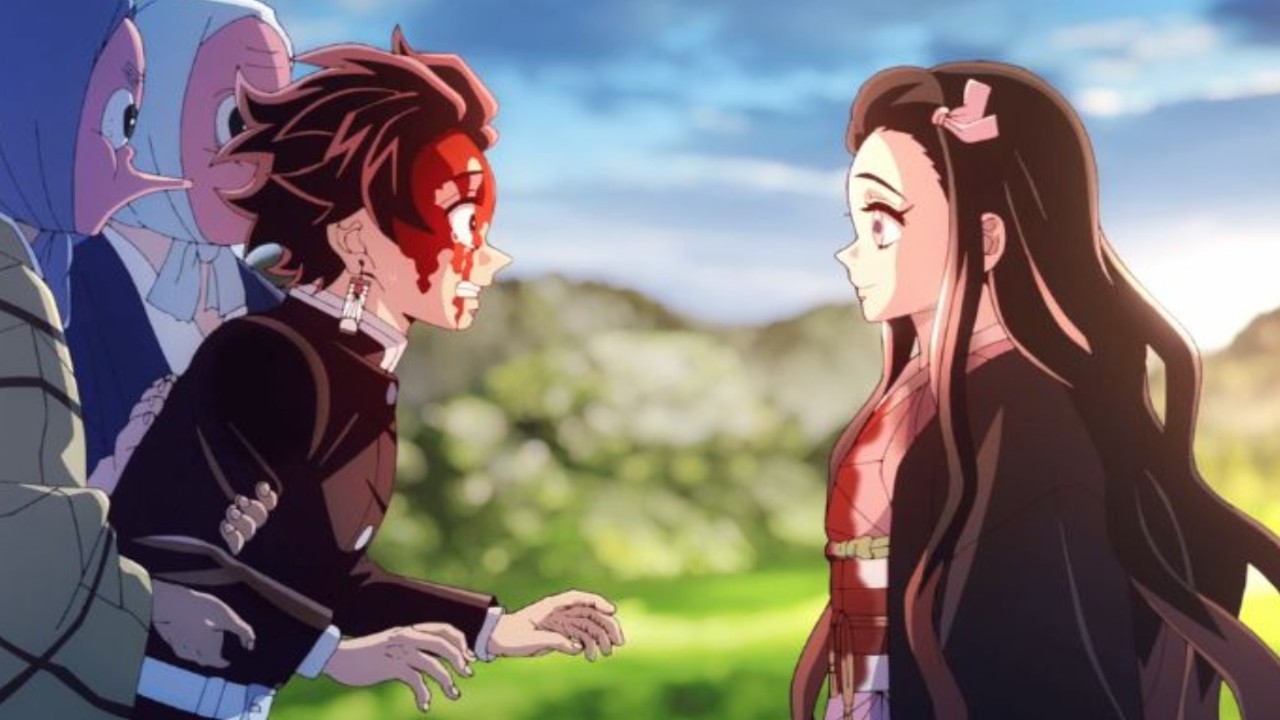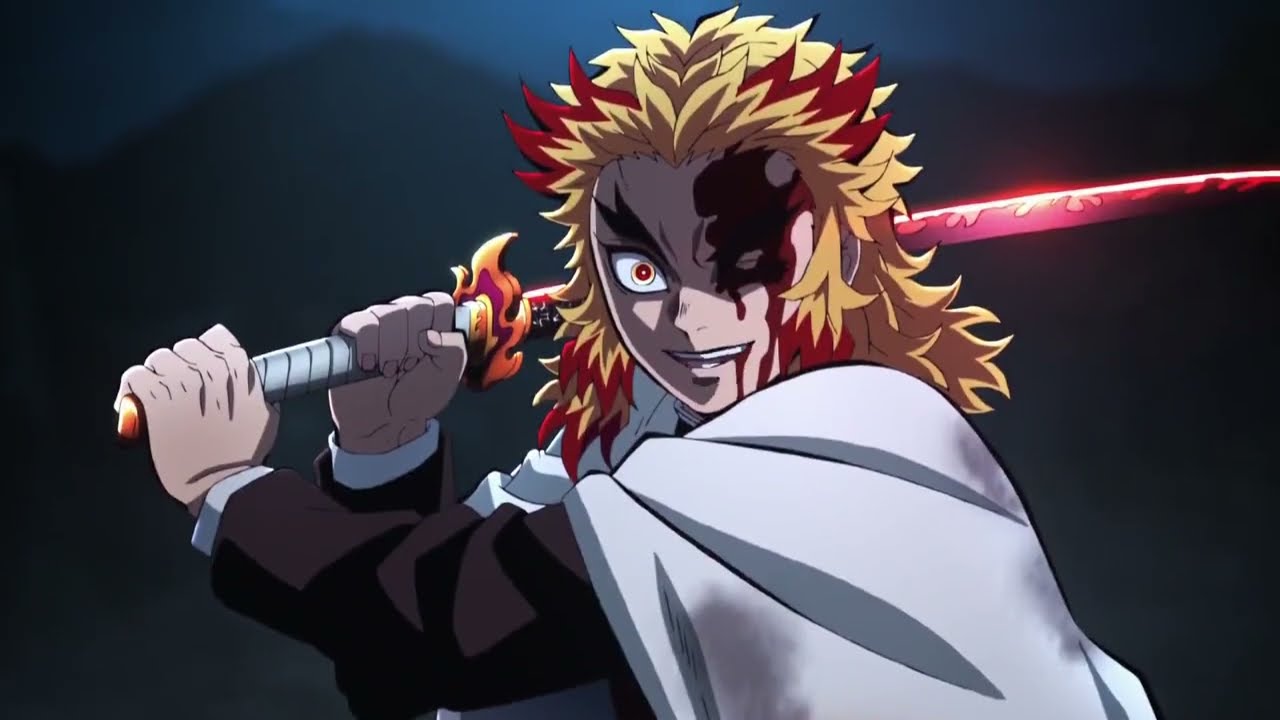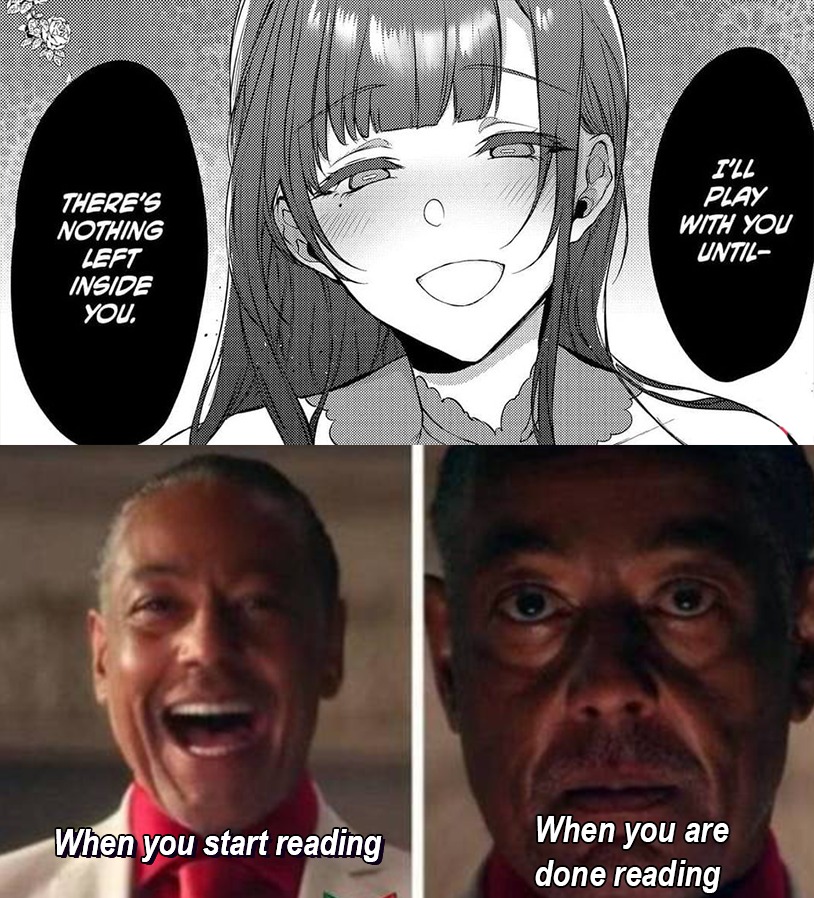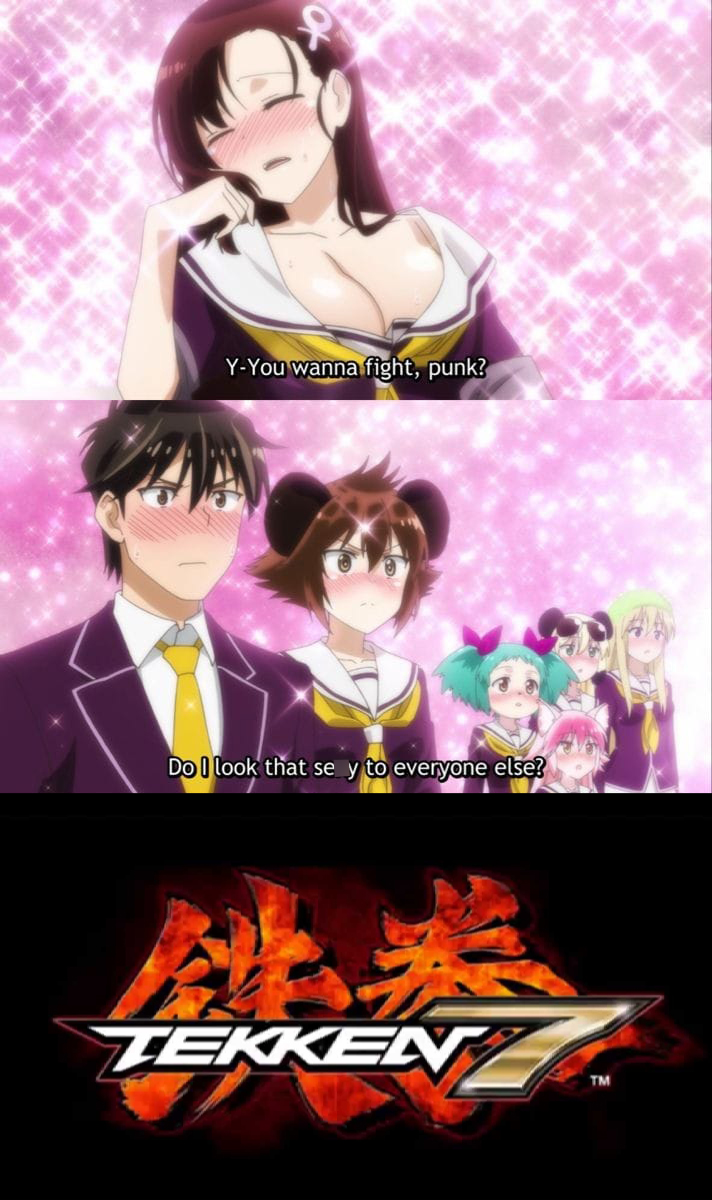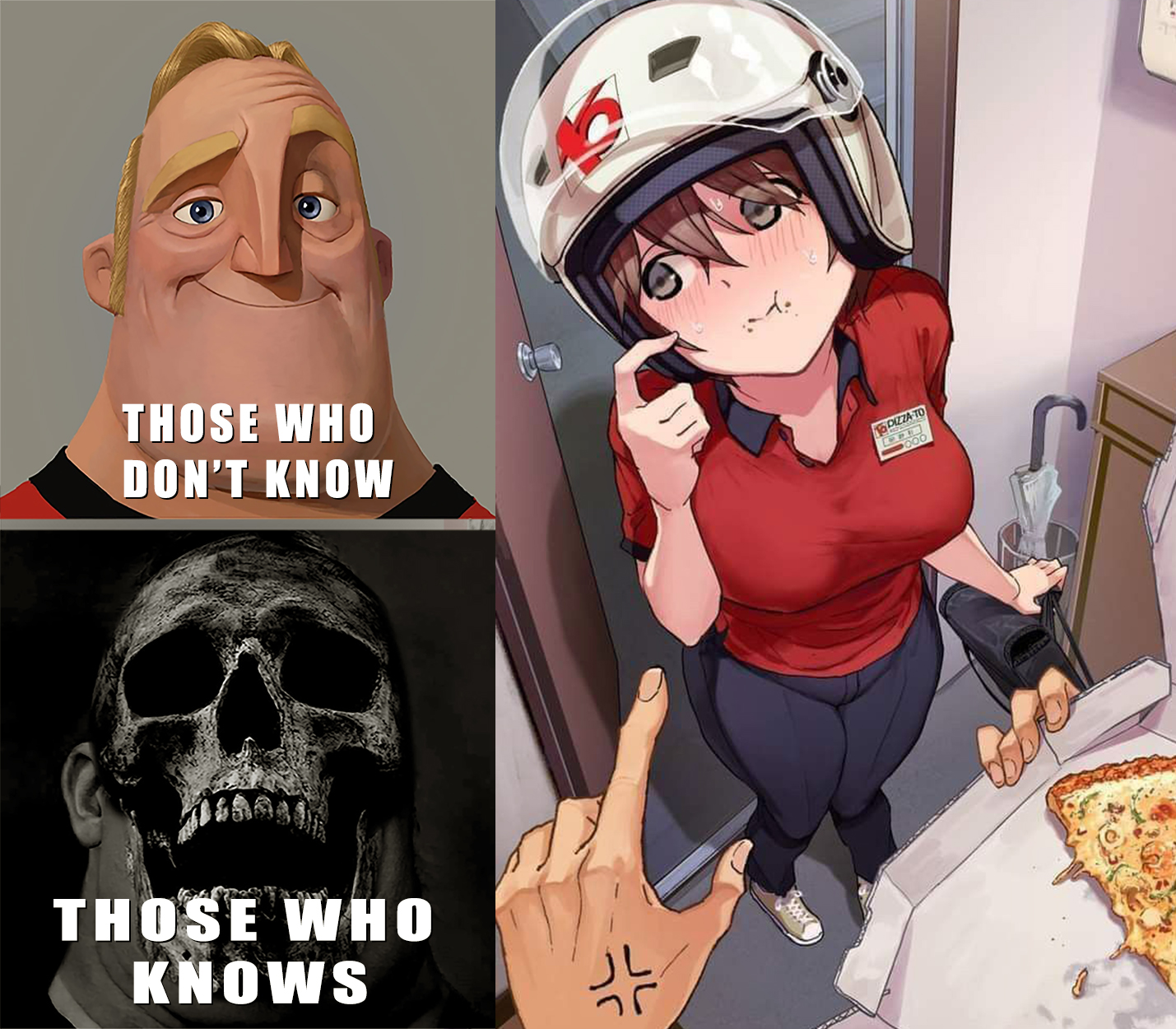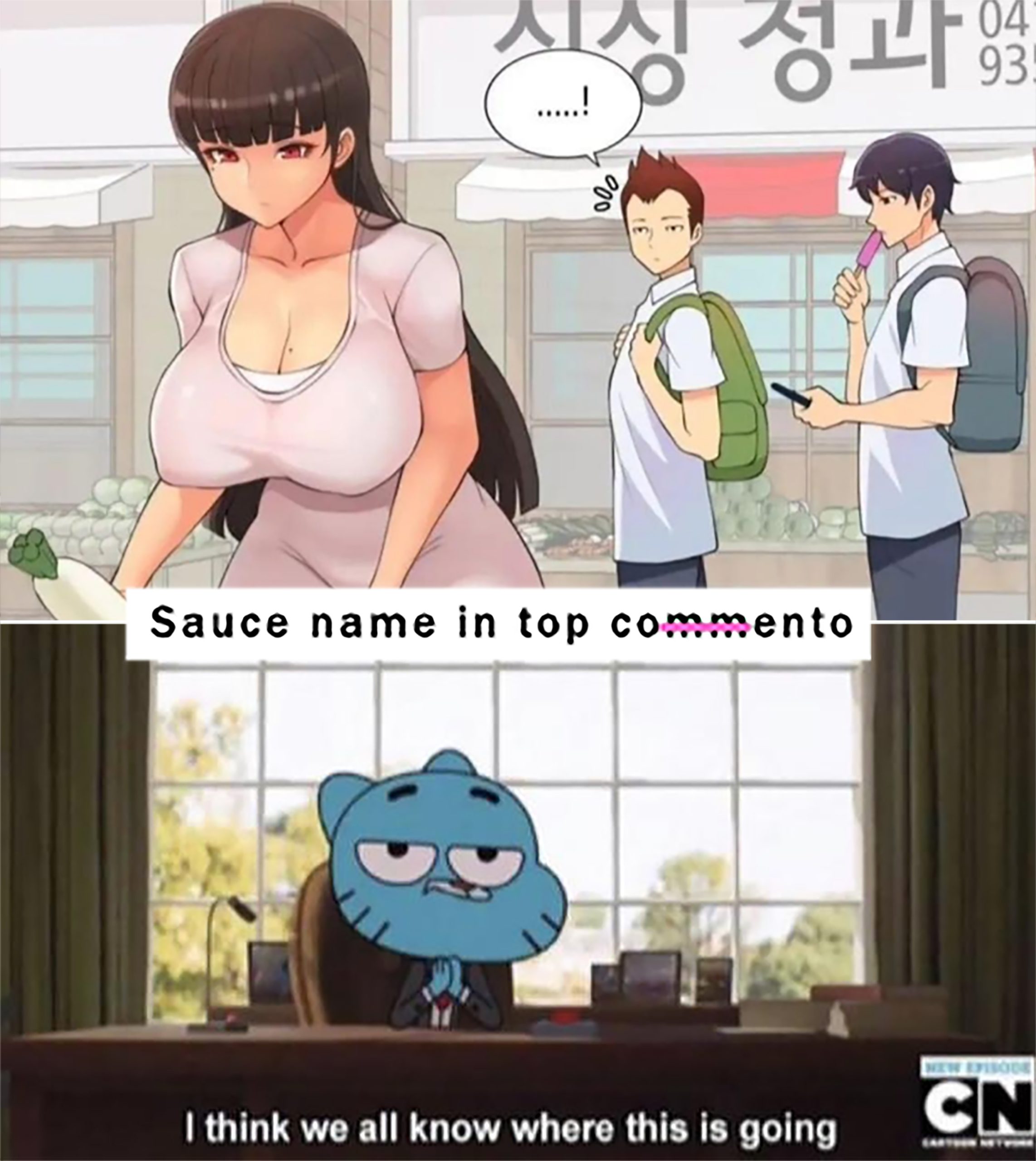oKoyoharu Gotouge’s Demon Slayer: Kimetsu no Yaiba first graced the pages of Weekly Shonen Jump back in 2016, eventually crafting 23 volumes before drawing to a close in 2020.
But the story was far from over. Its leap to the small screen in 2019, courtesy of Ufotable, initially had a modest reception before skyrocketing to fame, all thanks to that unforgettable final scene in episode 19.
Since then, Demon Slayer has cemented itself as a titan among shonen franchises, spawning multiple seasons and two blockbuster movies. With the manga’s tale still unfolding, there are a few arcs left to cover before we bid farewell to Tanjiro’s journey. So, Kimetsu no Yaiba isn’t going anywhere anytime soon.
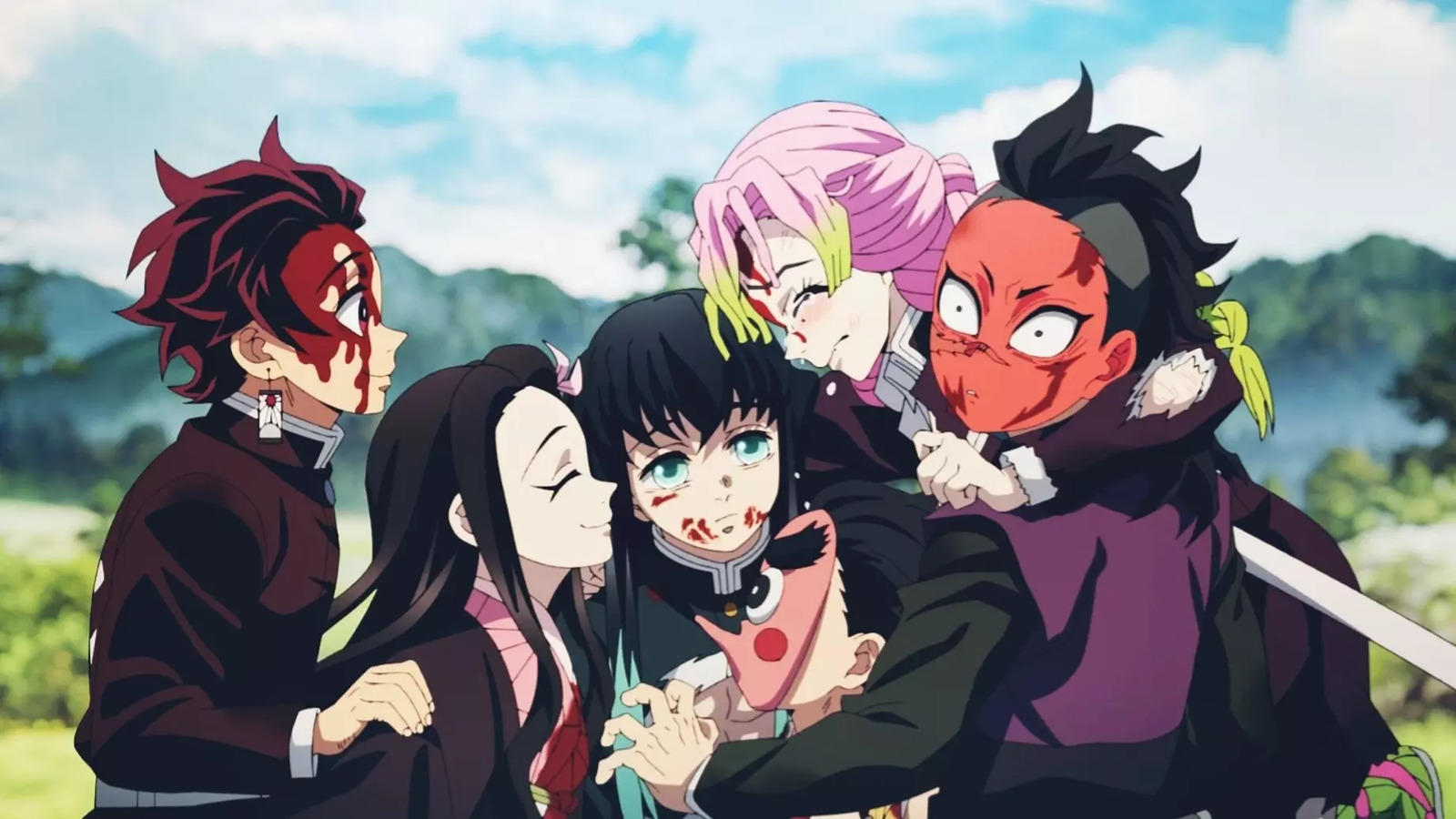
Ufotable’s adaptation has raised the bar for action anime, boasting production values that few can rival. Yet, beneath its stunning visuals lies a narrative that, while engaging, follows the familiar beats of a typical shonen adventure.
However, for those seeking something akin to Demon Slayer’s blend of action and emotion, the challenge lies in finding alternatives that can match Ufotable’s standard.
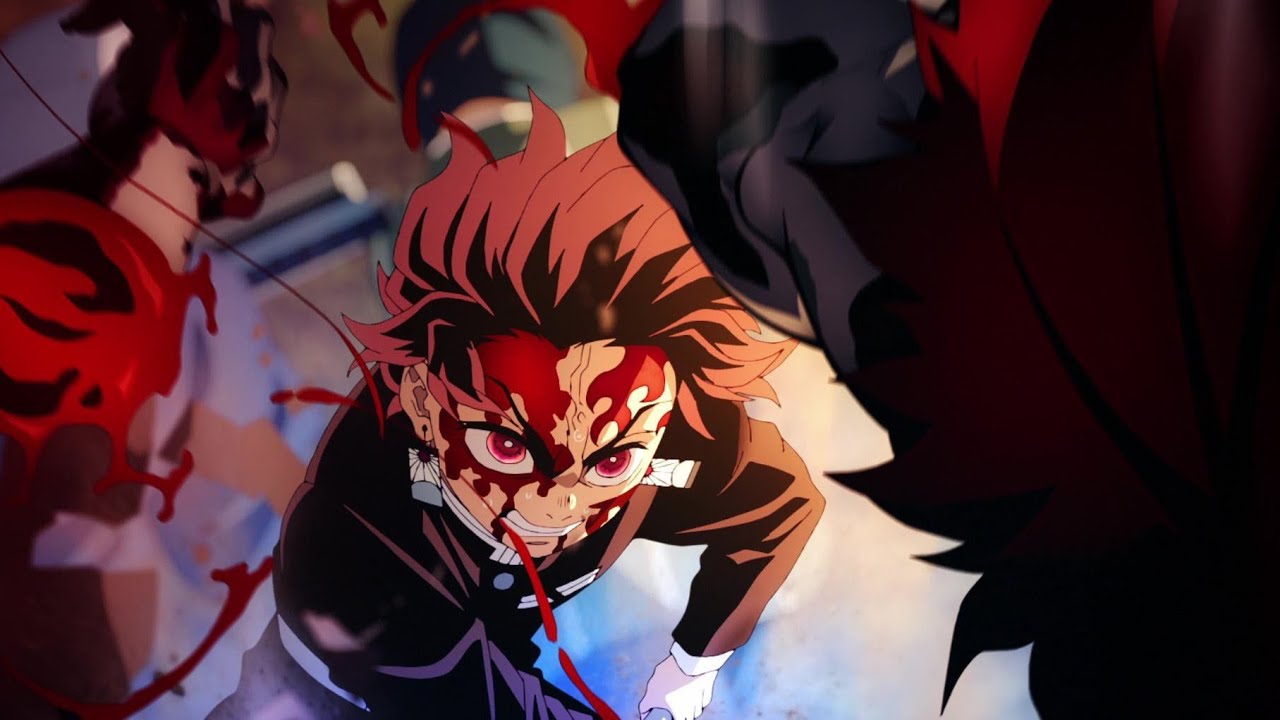

Spring 2023 offered a variety of anime, each with its own unique appeal. Among them, Hell’s Paradise emerged as a standout, drawing comparisons to Demon Slayer: Kimetsu no Yaiba’s Swordsmith Village Arc. Adapted from a Shonen Jump+ manga, the series revolves around a group of convicts dispatched to a mysterious island in search of an elixir of life.
At the center of this perilous journey is Gabimaru the Hollow, perhaps the most formidable of the convicts. Yet, beneath his fearsome exterior lies a compelling motivation for survival and redemption—his beloved wife. Hell’s Paradise follows Gabimaru and his executioner companion as they navigate the island’s surreal, marked by grotesque horrors, death, and a haunting beauty manifested in its flora.
Much like Demon Slayer, Hell’s Paradise delivers intense action and doesn’t shy away from graphic violence; in fact, it often ventures into even darker and more unsettling territory than its predecessor.
“Hell’s Paradise: Jigokuraku” (地獄楽) is a nice manga series written and illustrated by Yuji Kaku. Serialized in Shueisha’s Weekly Shonen Jump magazine from 2018 to 2021, the series has gained widespread acclaim for its compelling storyline, intricate world-building, and dynamic characters. It blends elements of historical fiction, supernatural fantasy, and action adventure into a thrilling narrative that keeps readers on the edge of their seats.
Set in the Edo period of Japan, “Hell’s Paradise” follows the exploits of Gabimaru the Hollow, a notorious ninja assassin known for his unparalleled skill and emotionless demeanor.
Despite his reputation, Gabimaru harbors a secret desire for a peaceful life with his beloved wife, but his past sins catch up with him when he is captured and sentenced to death for his crimes. However, Gabimaru is offered a chance at redemption when he is recruited by the shogunate to go on a dangerous mission to the mysterious island of Tengen.
Tengen is rumored to be a paradise on Earth, but its true nature is far more sinister. The island is home to dangerous criminals, deadly traps, and supernatural creatures, making it a treacherous battleground where only the strongest can survive.
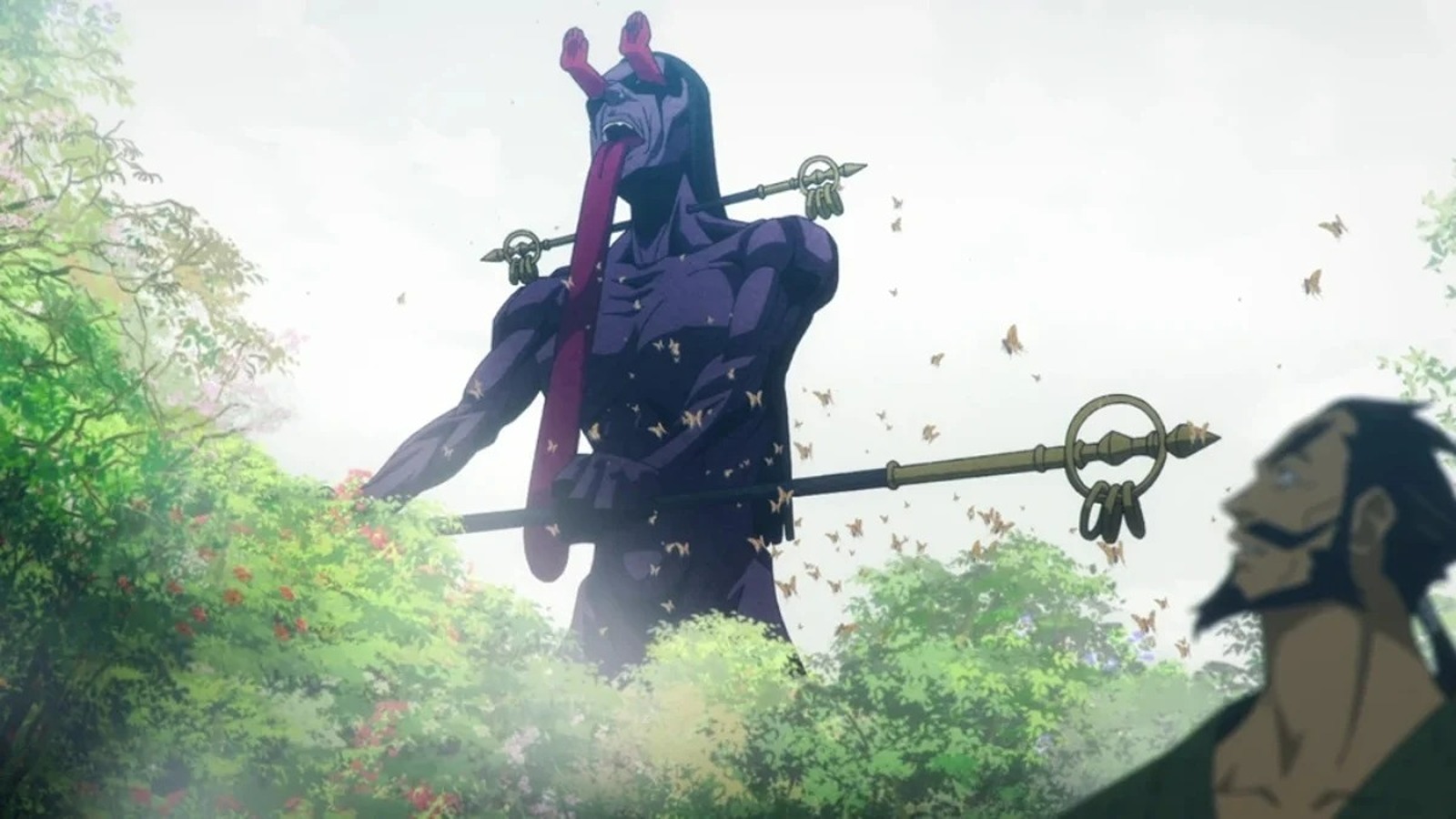
Gabimaru’s mission is to find the elixir of immortality rumored to be hidden on the island and bring it back to the shogunate. Alongside a motley crew of fellow criminals, each with their own unique abilities and motivations, Gabimaru must navigate the perils of Tengen and confront his own inner demons.
One of the standout aspects of “Hell’s Paradise” is its intricate world-building and rich mythology. Tengen is depicted as a vibrant and chaotic world filled with lush forests, towering mountains, and ancient ruins shrouded in mystery.
The island is populated by a diverse array of characters, including skilled warriors, cunning tricksters, and powerful sorcerers, each with their own agendas and alliances. As Gabimaru and his companions go deeper into the secrets of Tengen, they uncover dark truths about its origins and the true nature of immortality.
The series is also praised for its dynamic and well-developed characters. Gabimaru is a compelling protagonist whose stoic exterior belies a complex inner turmoil.
As he confronts the horrors of Tengen and forms unlikely bonds with his fellow criminals, Gabimaru undergoes a journey of self-discovery and redemption that challenges his beliefs and values. The supporting cast is equally engaging, with characters like Sagiri, a skilled swordswoman with a tragic past, and Shion, a mysterious monk with powerful abilities, adding depth and dimension to the story.
In terms of artwork, “Hell’s Paradise” features detailed and dynamic illustrations that bring its world to life with vivid intensity. Yuji Kaku’s distinctive art style combines intricate linework with bold shading and dynamic action sequences, creating a visually stunning experience that captures the brutality and beauty of the series’ setting.
The character designs are also noteworthy, with each character boasting unique traits and features that reflect their personalities and backgrounds.
Hell’s Paradise: Jigokuraku is a gripping manga series that offers a thrilling blend of action, suspense, and supernatural intrigue. With its compelling storyline, complex characters, and breathtaking artwork, it has earned its place as a standout entry in the shonen genre.
Whether you’re a fan of historical fiction, fantasy adventure, or character-driven drama, “Hell’s Paradise” delivers a nice and immersive experience that is sure to leave a lasting impression.
11. DanMachi
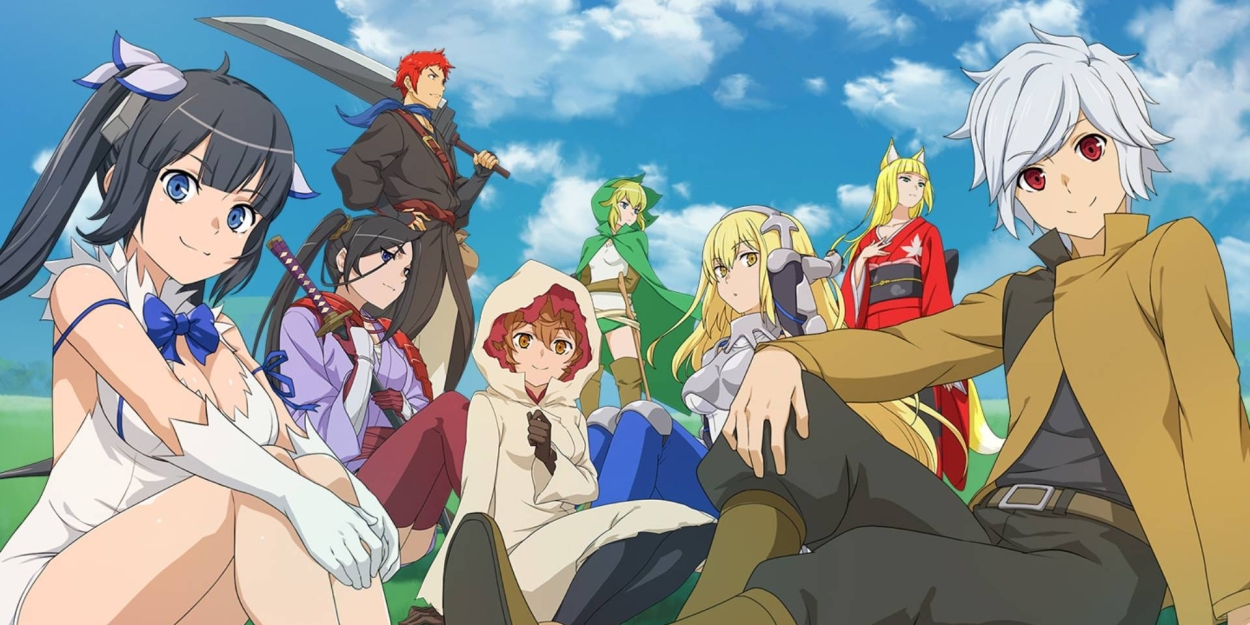
DanMachi, adapted from a popular light novel penned by Fujino Omori, immerses viewers in a fantastical world where adventurers roam a vast dungeon within the confines of a bustling city.
Here, each individual pledges allegiance to a Familia overseen by a deity, with our protagonist, Bell Cranel, being the sole follower of the goddess Hestia. Despite his humble beginnings, Bell’s determination to honor his goddess and repay a debt to a heroic adventurer who once saved him fuels his journey.
While on the surface DanMachi and Demon Slayer may seem worlds apart in terms of premise, fans of the latter would do well to give the former a chance. Both series showcase protagonists who undergo profound growth, evolving from inexperienced novices to formidable warriors, all without becoming overwhelmingly powerful.
Additionally, both anime boast richly developed supporting casts, each character given room to shine and grow independent of the protagonist. With each new arc, fresh faces, particularly female characters, are thrust into the spotlight, further enriching the narrative of both shows.
“Dungeon ni Deai wo Motomeru no wa Machigatteiru Darou ka,” often abbreviated as “DanMachi,” is a popular light novel series written by Fujino Ōmori and illustrated by Suzuhito Yasuda. It has also been adapted into a successful anime series, spin-off manga, and various other media. The series is known for its unique blend of fantasy, adventure, and elements of RPG (role-playing games), capturing the imaginations of fans worldwide.
Set in the fictional city of Orario, which is built around a massive underground labyrinth known as the Dungeon, “DanMachi” follows the adventures of Bell Cranel, a young adventurer aspiring to become the greatest hero in the world.
In Orario, adventurers known as “Dungeon Divers” go into the Dungeon to battle monsters, gather treasure, and increase their skills. Bell, a member of the Hestia Familia led by the goddess Hestia, goes on his journey to become stronger and find his place in the world.
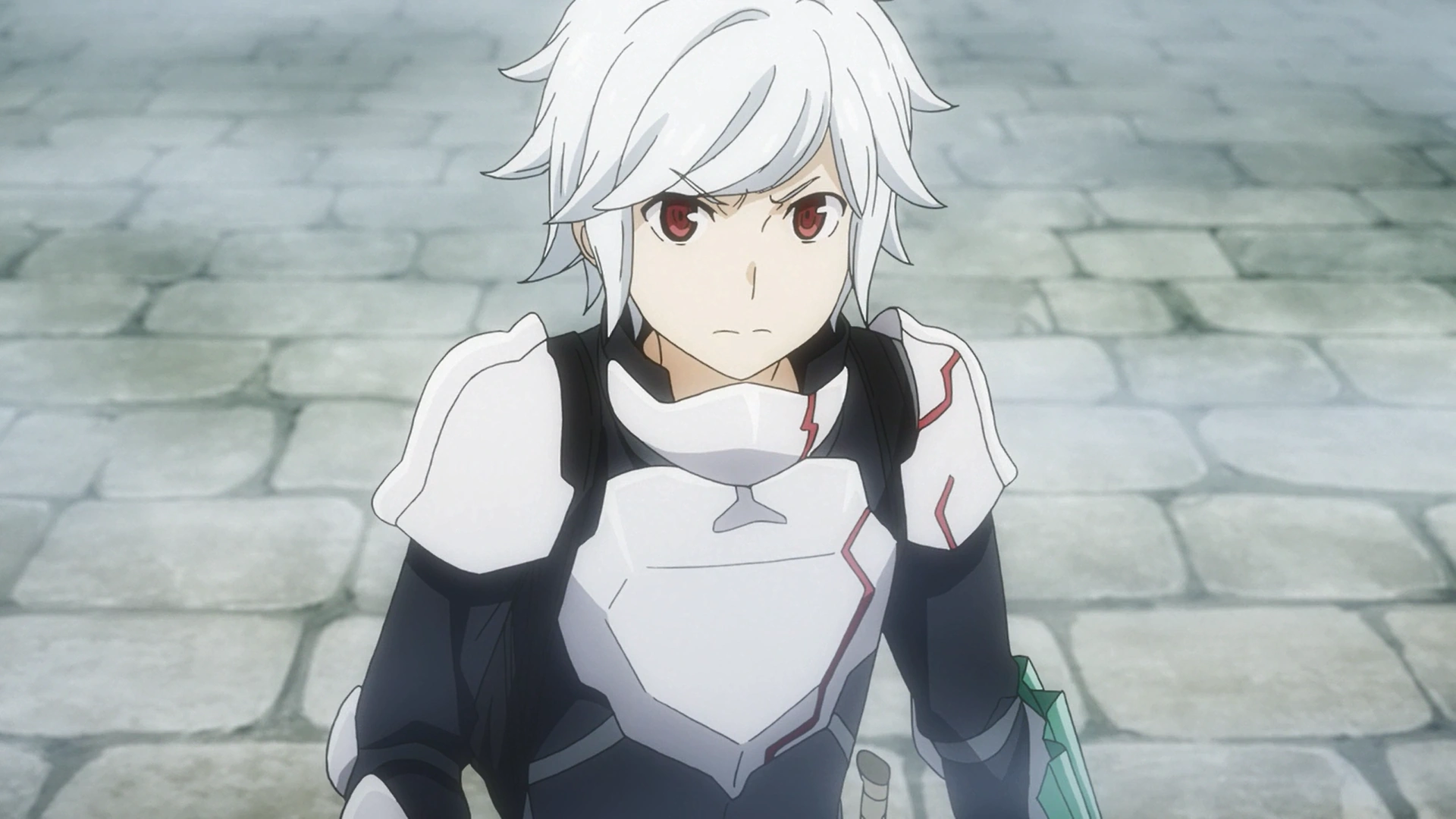
One of the defining features of “DanMachi” is its intricate world-building. Orario is a vibrant and dynamic city teeming with diverse races, cultures, and factions. The Dungeon itself is a sprawling maze filled with dangers and mysteries, with each floor presenting new challenges and opportunities for exploration. The series explores the politics, economics, and social dynamics of Orario, providing a rich backdrop for the characters’ adventures.
At the heart of “DanMachi” is its compelling cast of characters. Bell Cranel, the protagonist, is a likable and earnest young man with a strong sense of justice and a burning desire to protect those he cares about. Throughout the series, Bell undergoes significant growth and development as he faces adversity, forms bonds with his allies and discovers the true extent of his own abilities.
The supporting cast is equally memorable, with characters like Hestia, the devoted goddess who supports Bell on his journey, and Ais Wallenstein, a skilled swordswoman who serves as Bell’s inspiration and rival, adding depth and complexity to the story.
The series also features exciting action scenes and intense battles, with the Dungeon serving as a challenging and dangerous arena for the characters to test their skills and bravery. The combat system in “DanMachi” is reminiscent of RPG mechanics, with characters leveling up, gaining new abilities, and acquiring powerful equipment as they progress through the story.
The strategic elements of combat, combined with the characters’ unique skills and abilities, make for thrilling and dynamic action sequences that keep readers and viewers on the edge of their seats.
In addition to its action and adventure, “DanMachi” also explores themes of friendship, loyalty, and personal growth. The bonds forged between the characters are a driving force of the narrative, with themes of camaraderie and teamwork playing a central role in the characters’ development.
The series also goes into deeper philosophical questions about the nature of heroism, morality, and the pursuit of one’s dreams, adding depth and complexity to its storytelling.
Visually, the anime adaptation of “DanMachi” is well-produced, with vibrant animation, detailed character designs, and fluid action sequences that bring the world of Orario to life. The soundtrack, composed by Keiji Inai, complements the series’ tone and atmosphere with epic orchestral arrangements and catchy melodies that enhance the emotional impact of key moments.
DanMachi is a nice and engaging series that offers a thrilling mix of fantasy, adventure, and RPG elements. With its rich world-building, compelling characters, and exciting action scenes, it has earned its place as a beloved entry in the fantasy genre. Whether you’re a fan of light novels, anime, or RPGs, “DanMachi” has something to offer for everyone, making it a must-watch/read for fans of the genre.
10. Drifters
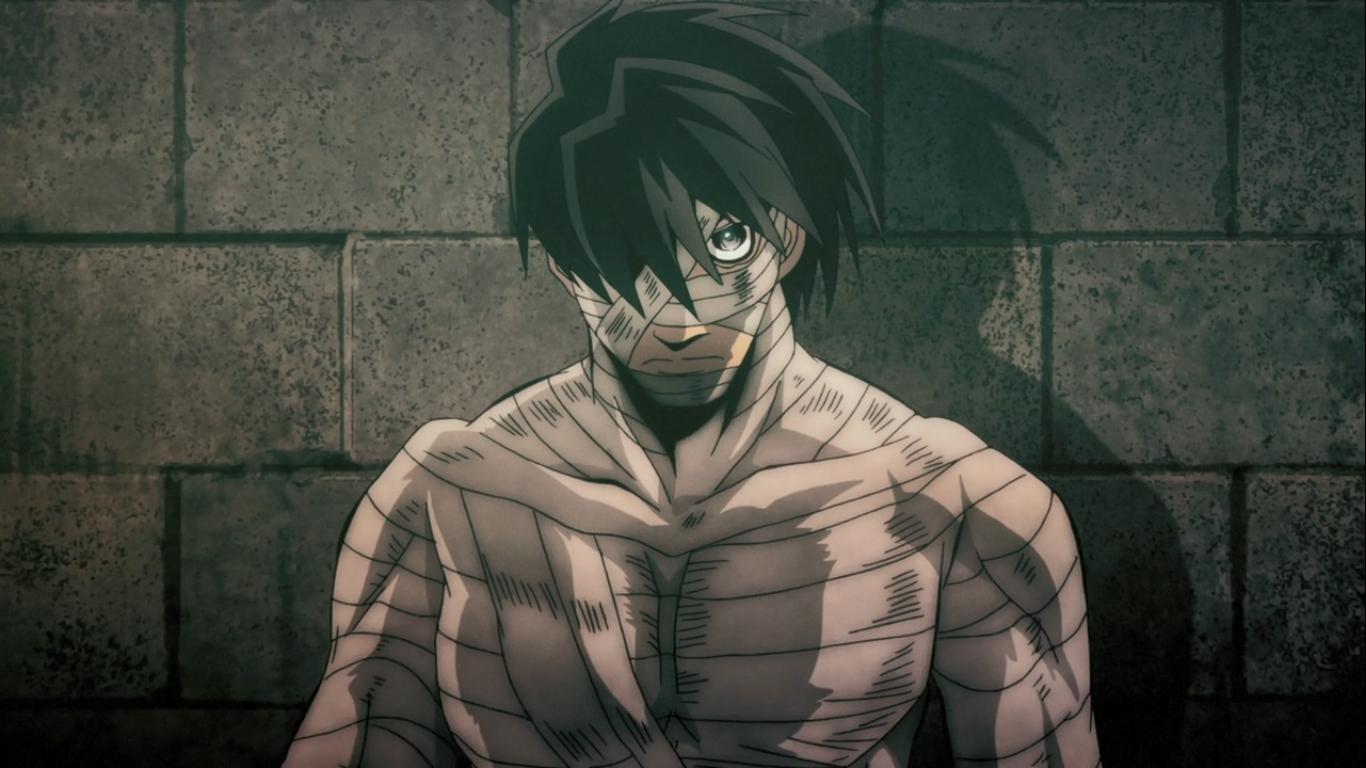
It’s a pity that recommending Drifters comes with a tinge of uncertainty regarding the possibility of a sequel ever seeing the light of day. Nonetheless, its first season remains a standout among the action anime of the 2010s, delivering a thrilling ride for viewers. Drawing parallels to Fate, this isekai series gathers renowned historical figures and thrusts them into deadly clashes, albeit set in a fantasy realm and divided into distinct factions.
Unabashedly visceral and extravagant, Drifters pulls no punches in its depiction of intense combat, easily holding its own against other series in the genre. Despite its seemingly absurd premise, the anime offers a fresh perspective on the isekai trope, reveling in the absurdity of its portrayals of iconic figures such as Joan of Arc and Oda Nobunaga.
“Drifters” is a manga series created by Kouta Hirano, known for his work on the popular series “Hellsing.” Serialized since 2009, “Drifters” has also been adapted into an anime series, produced by Hoods Drifters Studio, which aired in 2016. The series offers a unique blend of historical fiction, fantasy, and action, drawing inspiration from various periods of history and folklore to create a compelling narrative.
The story follows a group of legendary warriors known as “Drifters,” who are transported to a mysterious world filled with magic and conflict. Among them is Shimazu Toyohisa, a skilled samurai from the Battle of Sekigahara, who finds himself in the midst of a fierce battle upon his arrival.
He is soon joined by other historical figures, including the enigmatic Nobunaga Oda and the valiant Hannibal Barca, as they are thrust into a war between two powerful factions: the Ends, led by the sinister Black King, and the Drifters, who seek to oppose him.
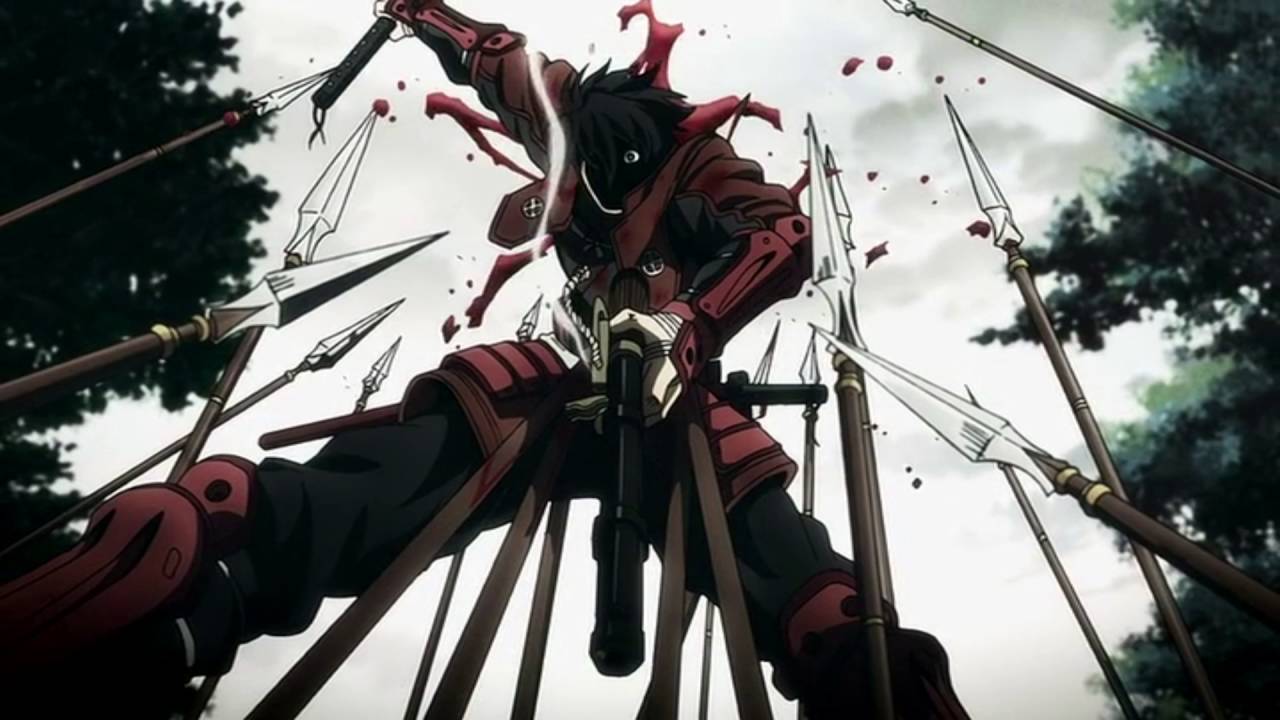
At its core, “Drifters” is a story of epic battles, political intrigue, and the clash of civilizations. The series explores themes of war, power, and the nature of heroism, as the Drifters navigate their new surroundings and form alliances with the locals to combat the forces of evil. The characters are complex and multifaceted, each with their own motivations and ideologies, adding depth and dimension to the story.
One of the highlights of “Drifters” is its eclectic cast of characters, drawn from various points in history and folklore. From samurai and knights to elves and dwarves, the series features a diverse array of personalities and backgrounds, each contributing to the richness of the world.
The interactions between the Drifters and the locals, as well as the rivalries and alliances that form among them, provide plenty of opportunities for character development and dramatic tension.
Visually, “Drifters” is striking, with detailed artwork and dynamic action sequences that bring the battles to life with visceral intensity.
Kouta Hirano’s distinctive art style is characterized by its bold linework, intricate character designs, and graphic violence, creating a gritty and immersive aesthetic that suits the series’ tone and themes. The animation in the anime adaptation is well-executed, with fluid motion and impressive choreography that enhances the excitement of the battle scenes.
The series also features a memorable soundtrack, composed by Yasushi Ishii, which adds to the atmosphere with its epic orchestral arrangements and rock-infused melodies.
The opening and ending themes, performed by Japanese rock bands such as “Ono Kensho” and “The Sixth Lie,” capture the energy and intensity of the series, setting the tone for each episode.
Drifters is a thrilling and action-packed manga and anime series that offers a fresh take on the isekai genre. With its richly imagined world, diverse cast of characters, and pulse-pounding battles, it has garnered a dedicated fanbase and critical acclaim.
Whether you’re a fan of historical fiction, fantasy, or action, “Drifters” is sure to satisfy with its gripping storytelling and dynamic visuals.
9. Bleach
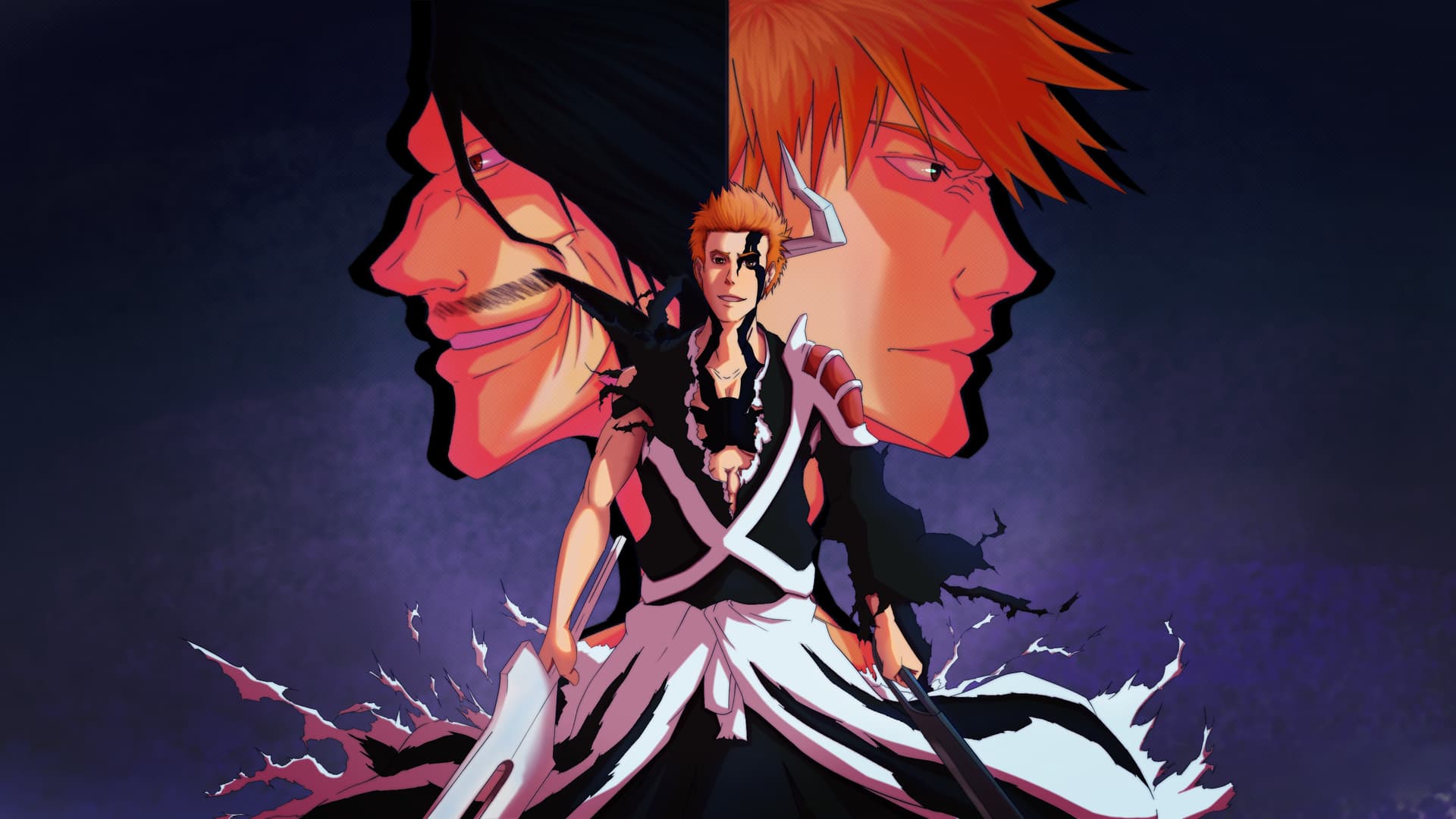
Bleach, a cornerstone of battle shonen and part of the iconic Big Three manga, initially enjoyed a successful anime run from 2004 to 2012. However, its triumphant return in the Fall 2022 season, now adapting the Thousand-Year Blood War arc, has revitalized the series to new heights. With Pierrot at the helm, the animation quality has never been more impressive.
Set in a universe where spirits wander as Hollows, only to be vanquished by the enigmatic Soul Society, Bleach follows the journey of ordinary student Ichigo after his chance encounter with Rukia, a Soul Reaper. As he is thrust into the world of Hollows and Soul Reapers, the series looks into complex storylines, yet consistently delivers exhilarating battle sequences that fascinate audiences.
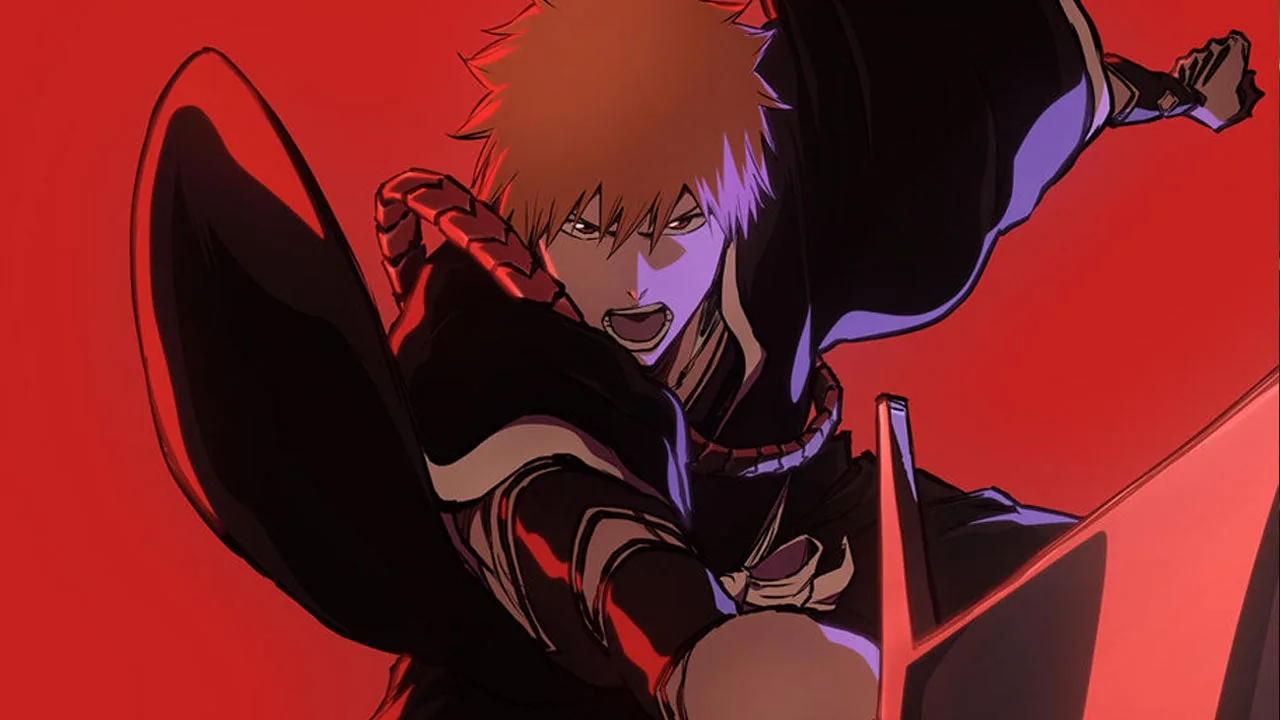
“Bleach” is a massively popular manga and anime series created by Tite Kubo. Serialized in Weekly Shonen Jump from 2001 to 2016, the series has left an indelible mark on the anime and manga, nice audiences with its unique blend of action, fantasy, and supernatural elements.
The story of “Bleach” centers around Ichigo Kurosaki, a high school student with the ability to see ghosts. His life takes a dramatic turn when he encounters a Soul Reaper—a spiritual being tasked with guiding the souls of the dead to the afterlife—and inadvertently absorbs her powers. With his newfound abilities, Ichigo must assume the role of a Substitute Soul Reaper and protect the living world from malevolent spirits known as Hollows.
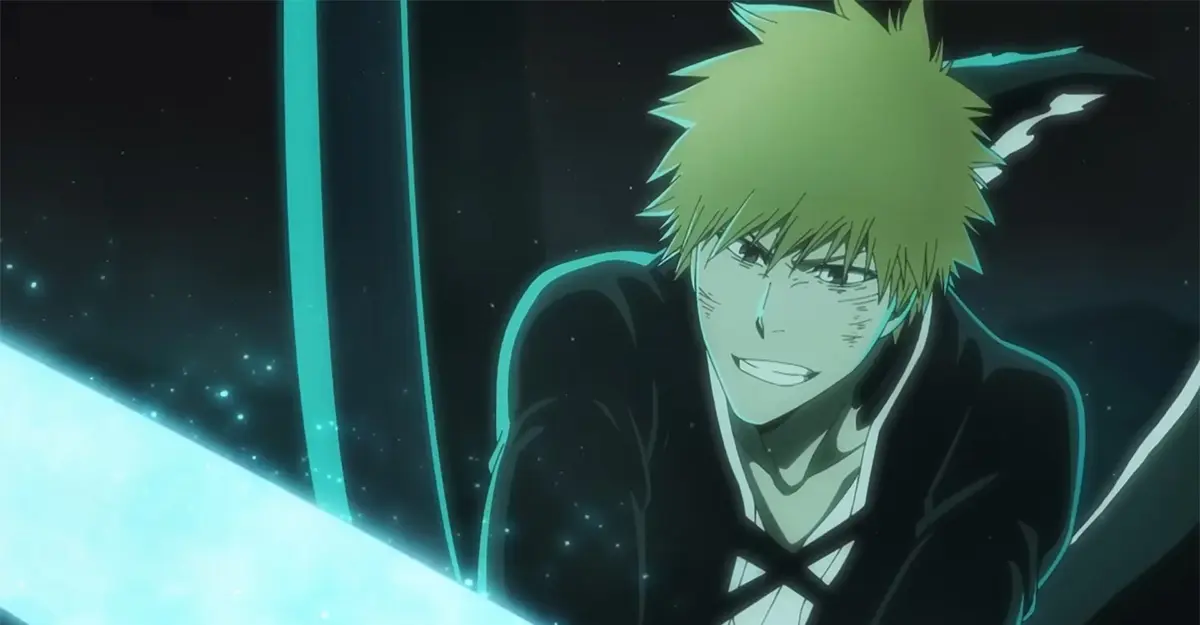
As the series progresses, Ichigo’s journey leads him to confront a variety of foes, including other Soul Reapers, powerful Hollows, and dark forces plotting to disrupt the balance between the worlds of the living and the dead. Along the way, he forms alliances with fellow Soul Reapers, including his friends and classmates, as well as powerful allies from other realms, each with their own unique abilities and motivations.
One of the defining features of “Bleach” is its expansive and intricately crafted world. The series introduces viewers to a spiritual realms, each with its own unique inhabitants, lore, and mythology. From the Soul Society, the afterlife realm where Soul Reapers reside, to Hueco Mundo, the desolate realm inhabited by Hollows, “Bleach” explores a vast and immersive universe filled with supernatural wonders and dangers.
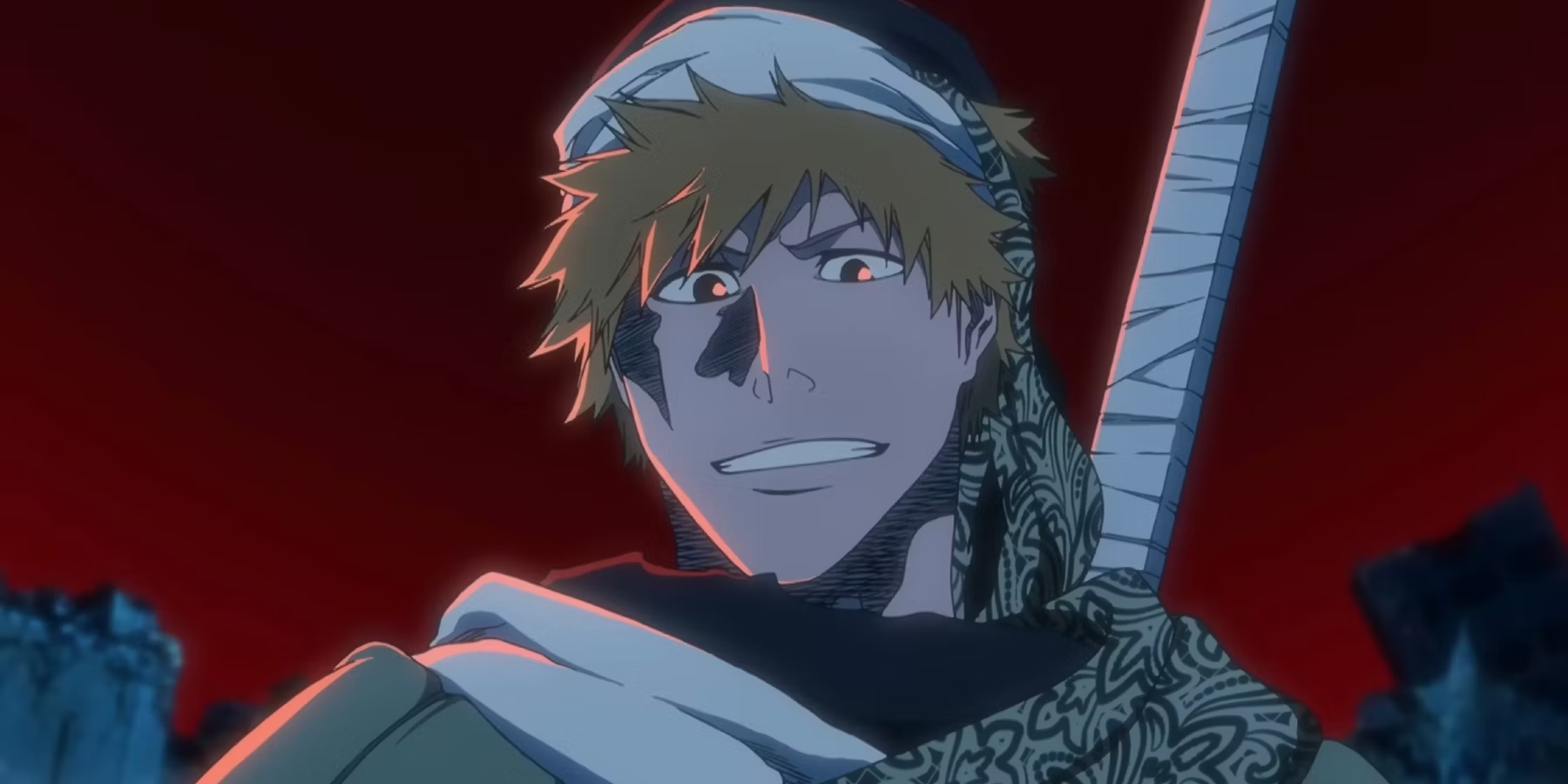
The characters of “Bleach” are another key strength of the series. Ichigo Kurosaki is a compelling protagonist whose journey from an ordinary high school student to a powerful Soul Reaper is filled with trials, sacrifices, and moments of growth. His relationships with his friends, family, and allies form the emotional core of the series, as they support each other through adversity and face their inner demons together.
In addition to Ichigo, “Bleach” features a diverse cast of characters, each with their own distinct personalities, backstories, and abilities. From the stoic and honorable Captain Byakuya Kuchiki to the eccentric and unpredictable Mayuri Kurotsuchi, the series is populated with memorable and iconic characters who leave a lasting impression on viewers.
Visually, “Bleach” is known for its dynamic and adrenaline-pumping action sequences, featuring intense battles between characters wielding a variety of supernatural powers and techniques. Tite Kubo’s detailed artwork and stylish character designs bring the world of “Bleach” to life with vibrant energy and flair, while the animation in the anime adaptation enhances the excitement and impact of the battles.
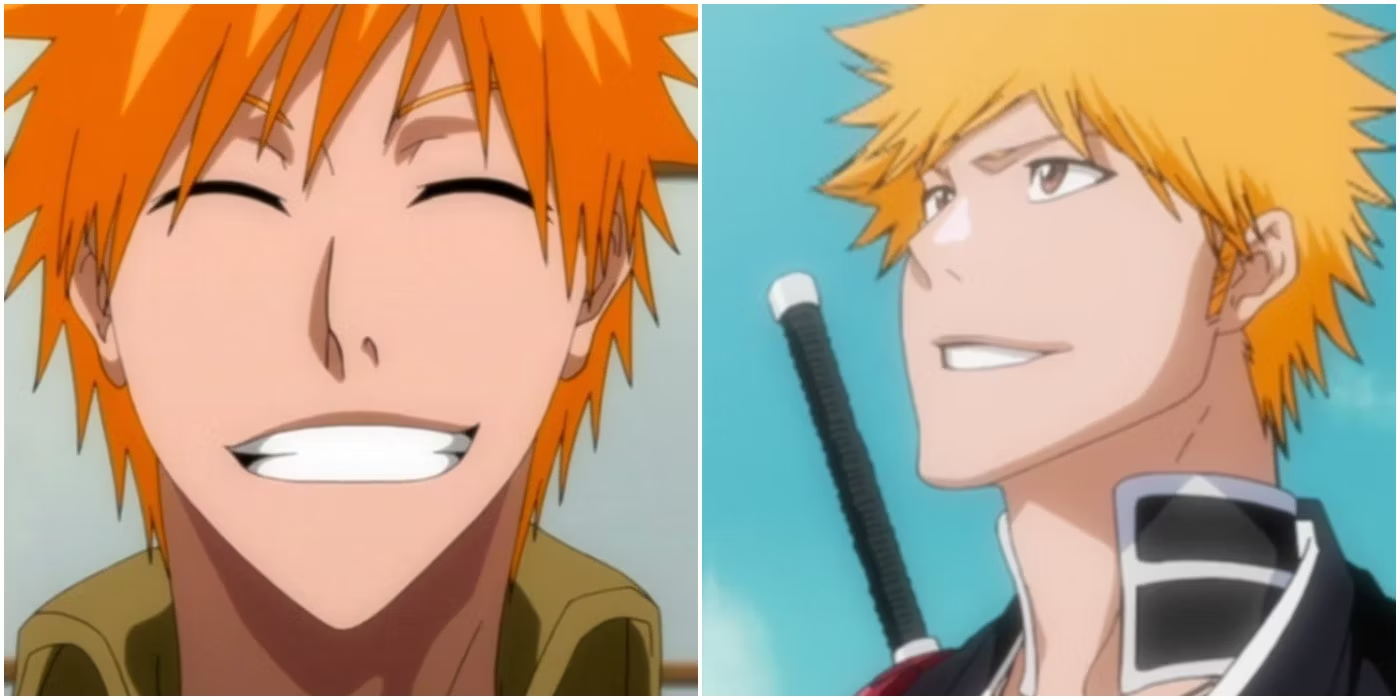
The soundtrack of “Bleach,” composed by Shiro Sagisu, further raises the series with its epic orchestral arrangements, catchy rock tunes, and haunting melodies. The opening and ending themes, performed by various artists, capture the spirit of the series with their energetic beats and emotional lyrics, setting the tone for each episode.
Bleach is a timeless classic that has left an indelible mark on the anime and manga industry. With its compelling characters, intricate world-building, and adrenaline-pumping action, it continues to grab audiences around the world, earning its place as one of the most beloved and iconic series in the shonen genre.
Whether you’re a fan of action-packed battles, supernatural adventure, or heartfelt character drama, “Bleach” offers something for everyone, making it a must-watch/read for anime and manga enthusiasts alike.
The anime that follows the journey of Ichigo Kurosaki, a teenager who gains the abilities of a Soul Reaper. With its blend of intense action, supernatural elements, and deep character development, “Bleach” quickly draws viewers in.
The series boasts a vast array of unique characters, each with their own compelling backstories and powers. While some story arcs can feel drawn out, the stunning fight scenes and intricate plot twists keep the audience engaged. The show’s rich mythology and dynamic animation style make “Bleach” a must-watch for fans of action-packed, supernatural adventures.
8. Golden Kamuy
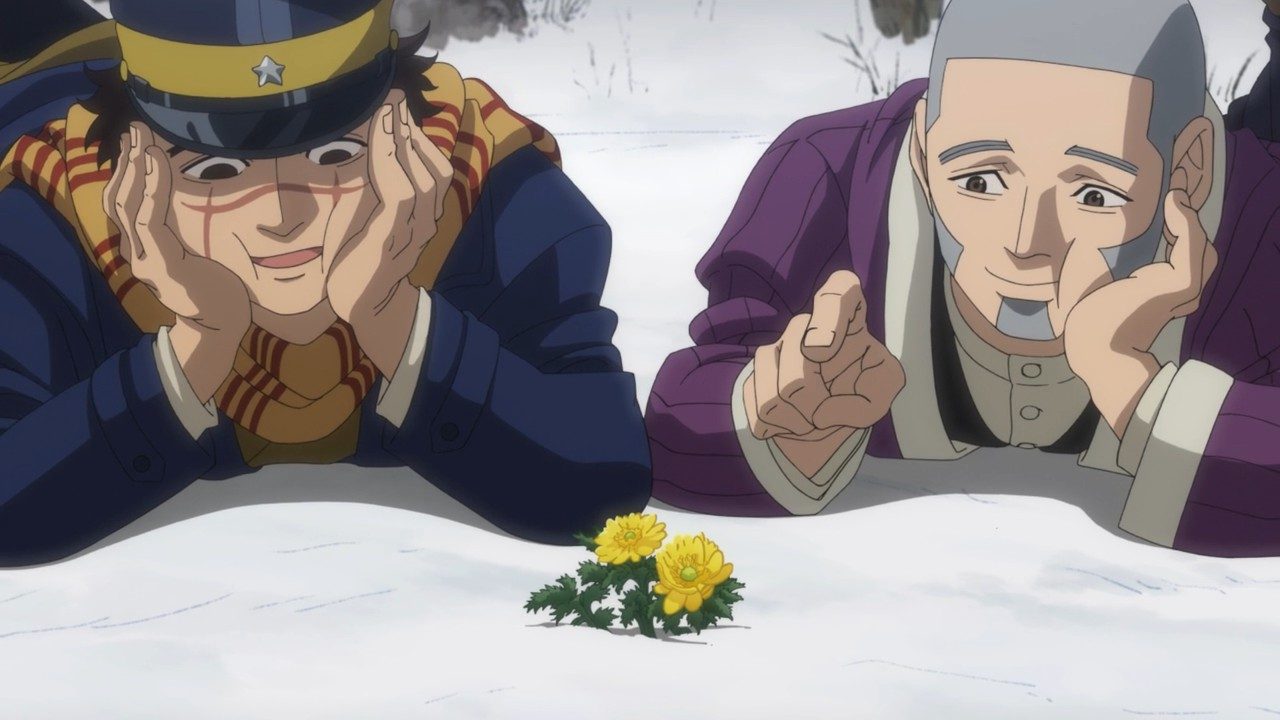
Golden Kamuy unfolds against the backdrop of the early 1900s, navigating the aftermath of the Russo-Japanese War. With the conflict fading into memory, Saichi Sugimoto seeks solace in the present while looking on a quest to unearth a legendary cache of gold.
The key to this treasure lies in maps tattooed on the bodies of various individuals, and Saichi is not one to shy away from unconventional methods to obtain them. Much like Demon Slayer, Golden Kamuy deftly melds action and comedy, albeit to varying degrees of audience reception.
While Demon Slayer’s comedic elements have sparked debates among viewers, Golden Kamuy shares a similar dynamic, seamlessly transitioning from intense, blood-soaked showdowns to lighthearted escapades in the blink of an eye. Yet, some argue that Golden Kamuy executes its humor with greater finesse than its counterpart.
Golden Kamuy is a thrilling manga series written and illustrated by Satoru Noda. Serialized in Weekly Young Jump since 2014, the series has garnered widespread acclaim for its unique blend of historical fiction, adventure, and mystery. It has also been adapted into multiple anime seasons, OVAs, and other media, further cementing its popularity among fans.
Set in the early 20th century, during the aftermath of the Russo-Japanese War, “Golden Kamuy” follows the journey of Saichi “Immortal” Sugimoto, a veteran soldier known for his remarkable survival skills. Desperate to support the family of his deceased comrade, Sugimoto goes on a quest to find hidden treasure, rumored to be hidden in Hokkaido, the northernmost island of Japan.
However, he soon discovers that he is not the only one seeking the treasure, as he crosses paths with a variety of colorful characters, including Asirpa, a young Ainu girl with exceptional hunting abilities, and other treasure hunters with their own agendas.
At its core, “Golden Kamuy” explores themes of survival, identity, and cultural heritage, as the characters navigate the harsh wilderness of Hokkaido and confront the ghosts of their past.

The series goes into the history and culture of the Ainu indigenous people, shedding light on their traditions, beliefs, and struggles in the face of colonization and modernization. Through the character of Asirpa, who serves as a window into Ainu culture, readers and viewers gain insight into the Ainu folklore, cuisine, and way of life.
One of the standout aspects of “Golden Kamuy” is its well-developed cast of characters, each with their own unique personalities, motivations, and quirks. Saichi Sugimoto is a compelling protagonist, whose gruff exterior belies a compassionate heart and unwavering sense of justice.
Asirpa is his steadfast companion, providing invaluable knowledge and guidance as they navigate the treacherous terrain of Hokkaido. The supporting cast is equally memorable, with characters like Hijikata Toshizo, a former samurai and leader of a group of rogue soldiers, and Lieutenant Tsurumi, a charismatic and ruthless military officer, adding depth and complexity to the story.
The series is also known for its intense and visceral action scenes, as Sugimoto and his companions face off against dangerous wildlife, rival treasure hunters, and other adversaries.
Satoru Noda’s detailed artwork and dynamic panel layouts bring the world of “Golden Kamuy” to life with breathtaking intensity, capturing the adrenaline-pumping excitement of the characters’ exploits. The series strikes a careful balance between moments of high-octane action and quiet introspection, allowing readers and viewers to fully immerse themselves in the story.
Visually, the anime adaptation of “Golden Kamuy” is well-produced, with fluid animation, vibrant colors, and expressive character design that faithfully captures the essence of the manga. The soundtrack, composed by Kenichiro Suehiro, complements the series’ tone and atmosphere with its evocative melodies and stirring orchestral arrangements, enhancing the emotional impact of key moments.
Golden Kamuy is a nice and immersive manga and anime series that offers adventure, mystery, and cultural exploration. With its compelling characters, thrilling action sequences, and meticulously researched historical backdrop, it has earned its place as one of the standout titles in the manga and anime industry.
Whether you’re a fan of historical fiction, action-adventure, or character-driven drama, “Golden Kamuy” offers something for everyone, making it a must-read/watch for manga and anime enthusiasts alike.
7. Seraph of the End
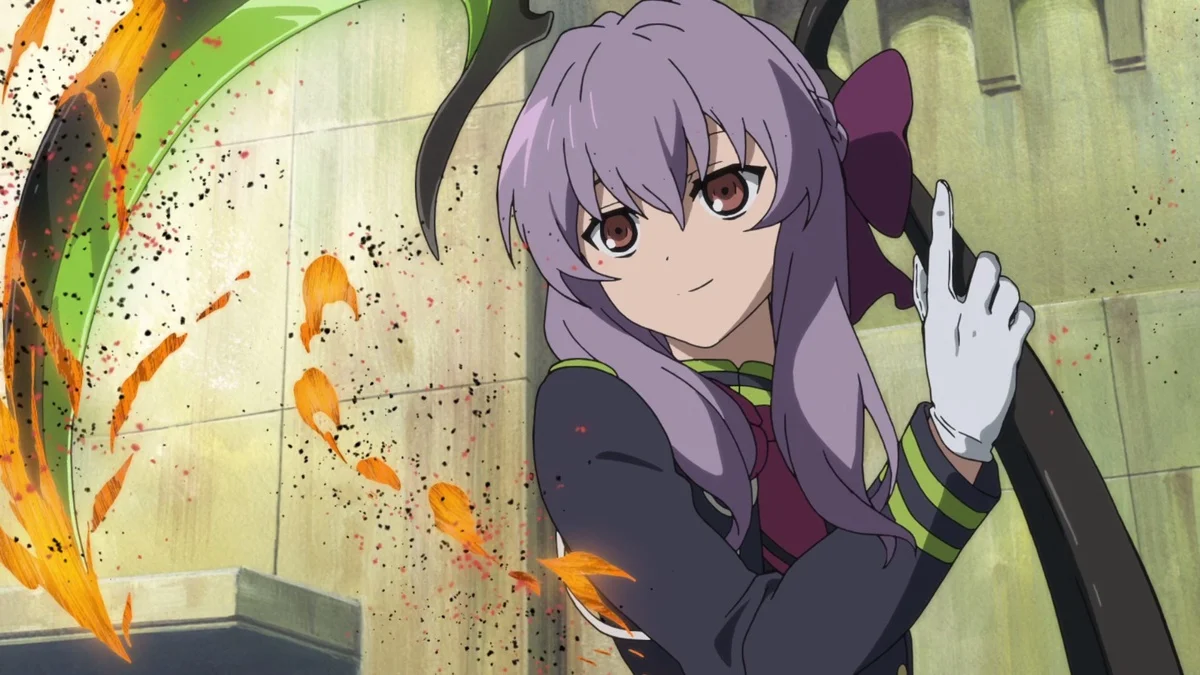
In a world devastated by a deadly disease that decimates most adults, humanity finds itself under the ruthless rule of vampires, who exploit surviving children as a blood source. Among them, Yuu and Mikaela hatch a daring escape plan, only to face tragic consequences. Yuu manages to survive and joins a human resistance group, fueled by a thirst for revenge, while Mikaela undergoes a transformation into a vampire. Thus unfolds the intertwined tale of Yuu and Mikaela in Seraph of the End, as they navigate the complex of war between human and vampire societies.
Spanning two seasons, Seraph of the End offers viewers an engaging shonen adventure, built upon a solid premise and enhanced by above-average action sequences. Despite occasional pacing issues, the series fascinates audiences with its spectacle and the evolving bond between its protagonists.
“Seraph of the End,” also known as “Owari no Seraph,” is an anime and manga series created by Takaya Kagami, illustrated by Yamato Yamamoto, and with storyboards by Daisuke Furuya. Serialized in Jump SQ since 2012, “Seraph of the End” has garnered a dedicated fanbase for its unique blend of dark fantasy, action, and supernatural themes.
The story is set in a world where humanity has been decimated by a mysterious virus that kills anyone over the age of 13. The surviving children are then enslaved by vampires, who emerge from the shadows to rule over the remnants of civilization. The protagonist, Yuichiro Hyakuya, is a young orphan who dreams of escaping from the vampire-controlled city and exacting revenge for the death of his family.
Driven by his desire for vengeance, Yuichiro joins the Japanese Imperial Demon Army (JIDA), an organization dedicated to fighting against the vampires and reclaiming humanity’s freedom. Alongside his childhood friend Mikaela Hyakuya and other members of the JIDA, Yuichiro goes on a perilous journey to uncover the truth behind the vampire conspiracy and put an end to their reign of terror.

One of the central themes of “Seraph of the End” is the struggle for survival and the sacrifices that come with it. The series explores the moral ambiguity of war and the complexities of human nature, as characters are forced to confront their own demons and make difficult choices in the face of adversity.
Yuichiro’s journey is one of self-discovery and redemption, as he grapples with his own inner darkness while fighting for a better future for himself and his comrades.
The series also goes into themes of friendship, loyalty, and the bonds that unite people in times of crisis. Yuichiro’s relationships with his fellow soldiers, including his mentor Guren Ichinose and the stoic Shinoa Hiiragi, form the emotional core of the series, as they band together to overcome seemingly insurmountable odds.
The camaraderie and mutual support among the characters provide moments of warmth and levity amidst the darkness of their world.
Visually, “Seraph of the End” is known for its striking character designs, detailed backgrounds, and fluid animation. Yamato Yamamoto’s artwork brings the post-apocalyptic world of the series to life with gritty realism and visceral intensity, while the animation in the anime adaptation enhances the impact of the action sequences and dramatic moments.
The soundtrack of “Seraph of the End,” composed by Hiroyuki Sawano and Takafumi Wada, further adds to the series’ atmosphere with its epic orchestral arrangements and haunting melodies. The opening and ending themes, performed by various artists, capture the emotional depth and intensity of the story, setting the tone for each episode.
Seraph of the End is a nice anime and manga series that offers a thrilling mix of action, drama, and supernatural intrigue. With its compelling characters, intricate world-building, and thought-provoking themes, it has earned its place as a beloved entry in the dark fantasy genre.
Whether you’re a fan of post-apocalyptic tales or supernatural thrillers, “Seraph of the End” offers something for everyone, making it a must-watch/read for anime and manga enthusiasts alike.
6. Inuyasha

Inuyasha, with its focus on demon-slaying, may have indeed influenced Demon Slayer’s narrative, as both series revolve around battling demons. Set across both contemporary and historical Japan, Inuyasha’s past segments transport viewers to the country’s golden age.
Serving as an isekai tale, the story follows Kagome, a young girl who accidentally falls into a well, leading her to a bygone era. In this ancient Japan overrun by demons, Kagome teams up with her half-demon companion, Inuyasha, in a quest to thwart evil and restore peace to the land.
“Inuyasha” is a beloved Japanese manga (comic) series written and illustrated by Rumiko Takahashi. It was serialized in Weekly Shonen Sunday magazine from 1996 to 2008 and later adapted into a highly successful anime television series, which aired from 2000 to 2004.
The series consists of 167 episodes and four movies. It has garnered a massive fanbase worldwide due to its compelling characters, intricate plotlines, and unique blend of action, fantasy, romance, and humor.
The story of “Inuyasha” centers around Kagome Higurashi, a modern-day high school girl who is transported to Japan’s Sengoku period (Feudal era) after falling into a mysterious well in her family’s shrine. In this ancient era, Kagome discovers that she is the reincarnation of a powerful priestess named Kikyo and possesses the Shikon Jewel, a powerful artifact sought by both demons and humans for its ability to grant immense power.
Upon her arrival, Kagome encounters Inuyasha, a half-demon who has been sealed to a tree for fifty years by Kikyo and is released by Kagome. Together, they go on a quest to recover the shattered pieces of the Shikon Jewel before they fall into the wrong hands.

Along their journey, they are joined by a diverse cast of characters, including the wise monk Miroku, the demon slayer Sango, and the kitsune (fox demon) Shippo, each with their own personal motivations and backstories.
One of the most compelling aspects of “Inuyasha” is its richly developed characters. Inuyasha himself is a complex figure torn between his demonic heritage and his human emotions, often struggling with feelings of inadequacy and guilt stemming from his troubled past.
Kagome, on the other hand, provides a strong contrast as a compassionate and determined young woman who gradually learns to harness her spiritual powers and become a formidable fighter in her own right.
The dynamic between Inuyasha and Kagome forms the heart of the series, as their initially antagonistic relationship blossoms into a deep and meaningful bond characterized by mutual respect and affection. Their romance is a central theme throughout the story, providing many heartwarming and poignant moments that resonate with audiences.
Aside from its central romance, “Inuyasha” also explores themes of friendship, redemption, and the consequences of one’s actions. Many characters grapple with past traumas and personal demons, and their struggles to overcome these challenges add depth and emotional resonance to the narrative.
In addition to its compelling characters and engaging storylines, “Inuyasha” is also known for its stunning artwork and dynamic action sequences. Rumiko Takahashi’s distinctive art style brings the fantastical world of feudal Japan to life with lush surfaces, intricate character designs, and meticulously detailed fight scenes.
Inuyasha is a timeless classic that has left a lasting impact on both anime and manga fandom. Its memorable characters, gripping plot, and blend of action, romance, and fantasy continue to grab audiences around the world, making it a must-watch for fans of the genre.
Whether you’re a newcomer to the series or a longtime fan, “Inuyasha” offers a nice journey filled with adventure, romance, and unforgettable moments.
5. Ragna Crimson
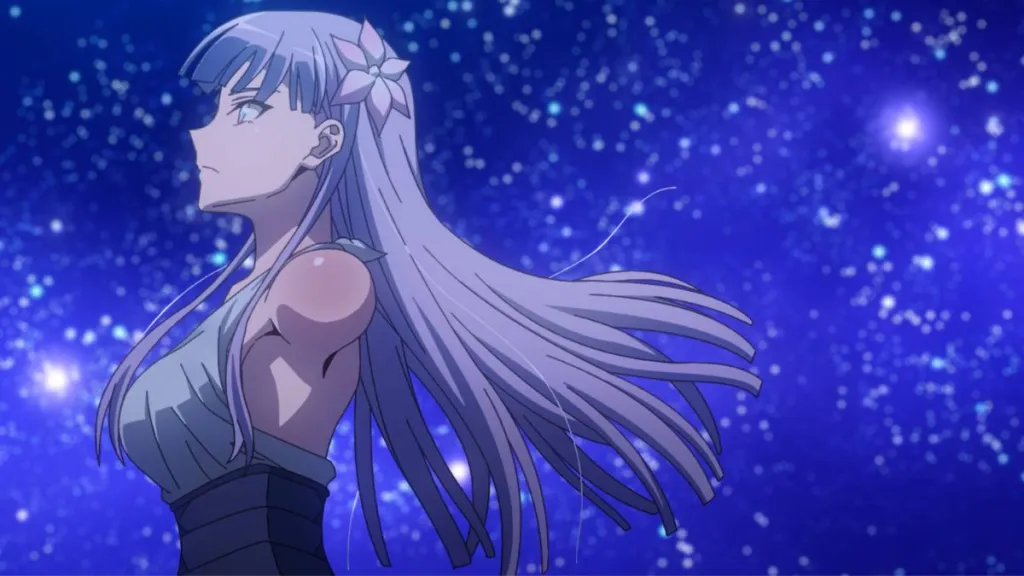
Battle shonen anime often traverse familiar territory, featuring humans pitted against various mythological creatures in epic struggles for survival. Ragna Crimson follows this pattern, immersing viewers in a fantasy realm where dragons reign supreme, leaving humanity trembling in fear. When the dragons decide to escalate their aggression, Ragna, an ordinary human with an admiration for the legendary hero Leonica, resolves to defy fate and forge a brighter future.
Joined by Crimson, a dragon harboring a deep-seated grudge against his kin, Ragna looks on a mission to change the course of history. While the series’ core premise may not break new ground, its strength lies in its characters, particularly the dynamic between Ragna and Crimson, as well as the compelling portrayal of antagonistic dragons.
“Ragna Crimson” is a manga series written and illustrated by Daiki Kobayashi. Serialized in “Shonen Jump+” since 2017, it has gained attention for its compelling story, intricate world-building, and stunning artwork. The series blends elements of dark fantasy, action, and adventure, offering readers a gripping narrative set in a richly imagined world.
“Ragna Crimson” takes place in a world where humanity coexists with powerful dragons. The story follows Ragna, a young man seeking revenge against the dragon that slaughtered his family and destroyed his village. Armed with a mysterious weapon called the Dragon Slayer, Ragna goes on a perilous journey to hunt down the dragon responsible for his tragedy.
As Ragna pursues his quest for vengeance, he encounters allies and adversaries alike, including fellow dragon slayers, mercenaries, and creatures of myth and legend. Along the way, he uncovers dark secrets about the true nature of dragons and the hidden forces that threaten the world.
At its core, “Ragna Crimson” explores themes of revenge, redemption, and the cycle of violence. Ragna’s quest for vengeance serves as a driving force for the narrative, propelling him into conflicts with both dragons and humans alike. However, as Ragna goes deeper into the mysteries surrounding the dragons and their origins, he begins to question his own motivations and the nature of his mission.
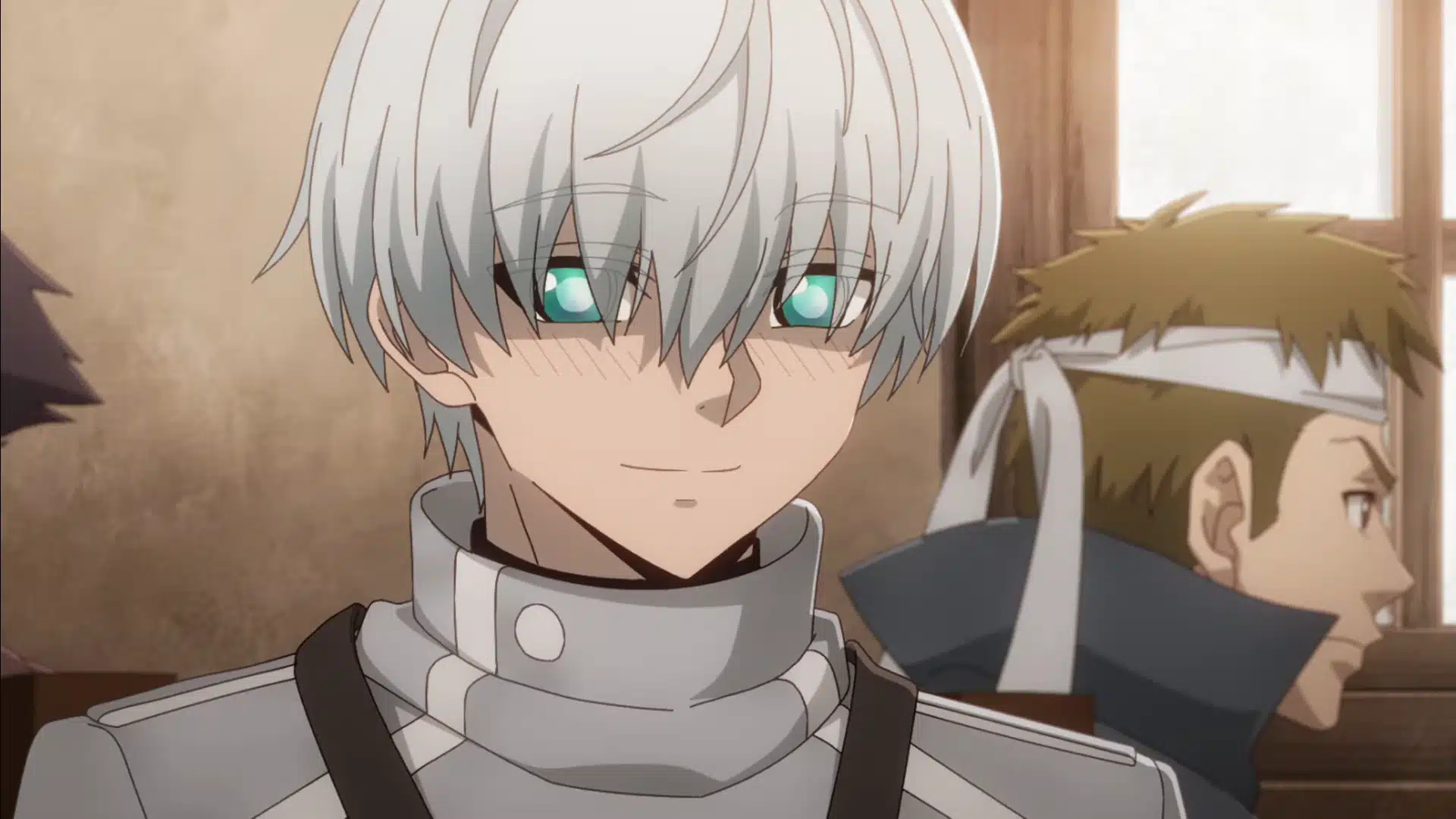
The world of “Ragna Crimson” is richly detailed and immersive, featuring a diverse array of surfaces, cultures, and civilizations. From bustling cities to rugged wilderness, each setting is brought to life through Daiki Kobayashi’s intricate artwork and meticulous attention to detail. The series also explores the complex relationships between humans and dragons, going into the mythology and lore that shape their interactions.
“Ragna Crimson” boasts a cast of compelling characters, each with their own motivations, backstories, and moral dilemmas.
Ragna himself is a complex protagonist, driven by grief and anger yet tempered by moments of compassion and vulnerability. His allies, such as the enigmatic dragon slayer Liselotte and the honorable knight Aghi, add depth and diversity to the narrative, while his adversaries pose formidable challenges that push him to his limits.
One of the standout features of “Ragna Crimson” is its breathtaking artwork and dynamic action sequences. Daiki Kobayashi’s illustrations are highly detailed and visually striking, capturing the intensity of combat and the awe-inspiring majesty of the dragons. The series’ fight scenes are meticulously choreographed, blending swordplay, magic, and dragon battles into thrilling spectacles that keep readers on the edge of their seats.
“Ragna Crimson” has garnered praise from both readers and critics for its compelling storytelling, nice artwork, and imaginative world-building. The series has developed a dedicated fanbase and received accolades for its creative vision and narrative depth.
“Ragna Crimson” is recommended for readers who enjoy dark fantasy, action-packed adventures, and immersive world-building. With its compelling characters, gripping plot, and stunning artwork, “Ragna Crimson” offers a thrilling and unforgettable journey into a world of dragons, magic, and the quest for redemption.
Whether you’re a fan of fantasy manga or simply looking for an epic tale of heroism and sacrifice, “Ragna Crimson” is sure to grab your imagination and leave you eagerly awaiting each new chapter.
4. Kabaneri of the Iron Fortress

Kabaneri of the Iron Fortress often draws comparisons to Attack on Titan’s first season, but beneath the surface, it offers a distinct experience. For those seeking anime akin to Demon Slayer, Kabaneri may prove to be a better match, sharing a similar era and emphasis on action.
Set against the backdrop of an apocalyptic world, the series revolves around the eponymous iron fortress, a train that serves as the primary setting. This unique premise bears a resemblance to Demon Slayer’s Mugen Train arc and movie, adding an intriguing layer of connection between the two series.
However, instead of demons, Kabaneri introduces viewers to a world overrun by zombies, who pose a relentless threat to humanity. These undead adversaries are anything but sluggish, ramping up the tension and excitement of the series’ action-packed narrative.
“Kabaneri of the Iron Fortress” is a visually stunning anime series that blends elements of steampunk, action, and horror into a compelling narrative set in an alternate timeline during the Industrial Revolution in Japan.
Created by Wit Studio, the same studio responsible for the immensely popular “Attack on Titan,” “Kabaneri of the Iron Fortress” follows the journey of humanity as they struggle to survive in a world overrun by Kabane, monstrous creatures reminiscent of zombies.
The story unfolds in the walled city of Hinomoto, which stands as one of the last bastions of humanity against the Kabane menace. These undead creatures are driven by an insatiable hunger for flesh and possess an almost indestructible heart encased in iron cages, making them incredibly difficult to kill. The only way to stop them is by destroying their hearts, a task made even more challenging by their incredible speed and strength.
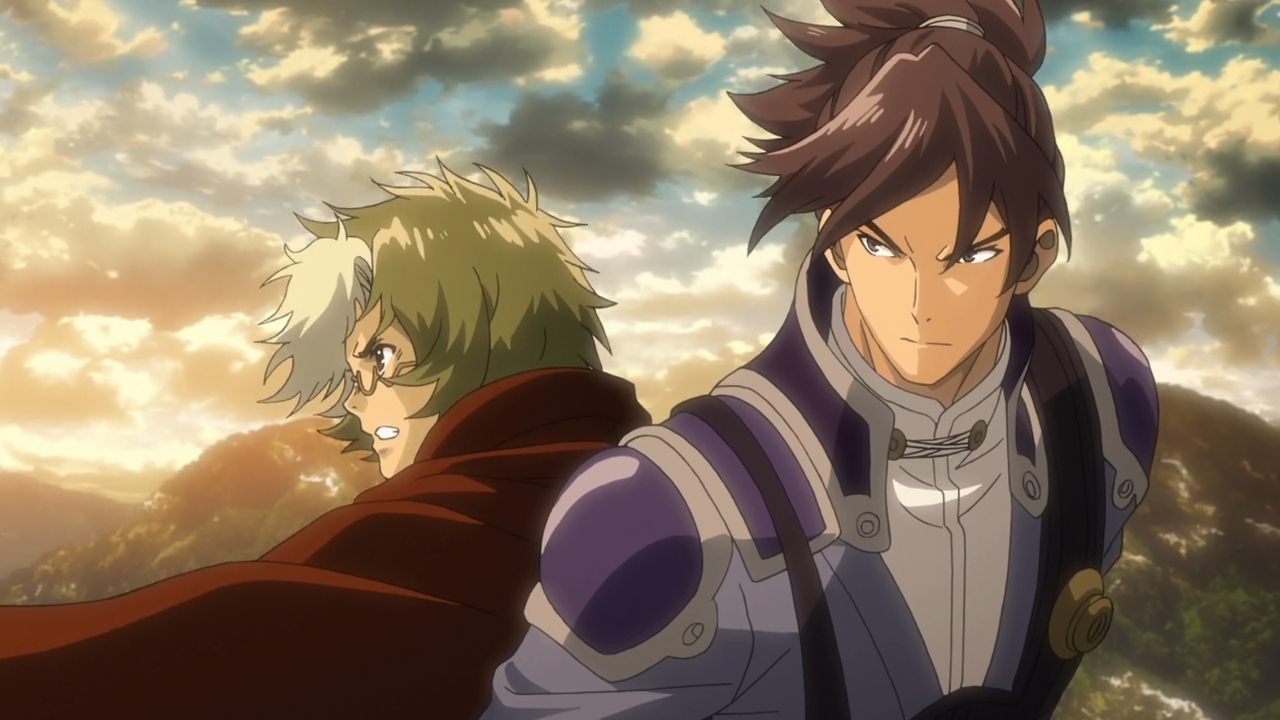
At the center of the story is Ikoma, a young engineer who develops a weapon called the “piercing gun” capable of piercing the Kabane’s iron-plated hearts. After a traumatic encounter with the Kabane that leaves him infected but not turned, Ikoma becomes a Kabaneri, a human-Kabane hybrid with enhanced abilities.
Alongside Mumei, a mysterious and skilled Kabaneri girl, Ikoma goes on a journey to protect humanity and uncover the secrets behind the Kabane outbreak.
One of the most striking aspects of “Kabaneri of the Iron Fortress” is its stunning animation and visual design. The series features beautifully detailed backgrounds, fluid action sequences, and meticulously crafted character designs that immerse viewers in its steampunk-inspired world.
From the intricate mechanical designs of the trains to the gritty, industrial aesthetic of the city, every aspect of the animation contributes to the immersive atmosphere of the series.
Beyond its visual appeal, “Kabaneri of the Iron Fortress” also excels in its storytelling and character development. The series explores themes of survival, sacrifice, and the nature of humanity in the face of adversity. Ikoma’s journey from a determined engineer to a reluctant hero grappling with his newfound powers is both engaging and emotionally resonant.
Similarly, Mumei’s mysterious past and her complex relationship with Ikoma add depth to the narrative, while the supporting cast of characters each have their own motivations and struggles that enrich the story.
In addition to its compelling characters and narrative, “Kabaneri of the Iron Fortress” delivers pulse-pounding action sequences that keep viewers on the edge of their seats.
From intense train battles against hordes of Kabane to tense showdowns between characters, the series never shies away from adrenaline-fueled excitement. The dynamic choreography and fluid animation of these action scenes raise the stakes and contribute to the intensity of the series.
However, “Kabaneri of the Iron Fortress” is not without its flaws. Some viewers have criticized the pacing of the series, particularly in the middle episodes where the plot slows down considerably. Additionally, while the animation is generally of high quality, there are occasional instances of CGI that can be jarring and detract from the aesthetic.
Kabaneri of the Iron Fortress” is a gripping anime series that offers a thrilling blend of action, horror, and drama. With its stunning animation, compelling characters, and intense action sequences, it’s a must-watch for fans of the steampunk genre or anyone looking for an exciting anime experience.
3. Attack on Titan

As ubiquitous as Demon Slayer has become, Attack on Titan arguably surpasses it in sheer popularity, with both series enjoying overlapping reigns of dominance in the anime. Beyond their shared era of prominence, the two shows are often associated due to their thematic parallels, particularly in depicting humanity’s struggle against overwhelming supernatural threats.
In Attack on Titan, colossal Titans—gigantic, man-eating beings—have driven humanity to the brink, forcing survivors behind massive walls for protection. However, the illusion of safety is shattered in the series’ opening episode when the Titans breach the walls, plunging humanity into chaos.
While initially following a conventional man vs. monster narrative, Attack on Titan evolves into a complex and multifaceted story as it progresses, culminating in a gripping and thought-provoking final arc.

“Attack on Titan” is an epic anime series based on the manga of the same name by Hajime Isayama. Set in a world where humanity is on the brink of extinction due to the existence of gigantic humanoid creatures known as Titans, the series follows the journey of Eren Yeager and his friends as they fight for survival and uncover the mysteries surrounding the Titans.
The story takes place in a walled city known as Wall Maria, which serves as humanity’s last line of defense against the Titans. These seemingly mindless giants have plagued humanity for over a century, devouring humans without reason or remorse. The citizens of Wall Maria live in constant fear of the Titans lurking beyond the walls, and the series opens with a devastating attack that breaches the outer wall, leading to chaos and destruction.
At the heart of the story is Eren Yeager, a young man driven by a burning desire for vengeance against the Titans following the death of his mother in the initial attack. Alongside his adoptive sister Mikasa Ackerman and childhood friend Armin Arlert, Eren joins the military to enlist in the fight against the Titans.

As they train to become members of the elite military unit known as the Survey Corps, they encounter both allies and enemies, uncover dark secrets about the Titans, and face unimaginable challenges that test their courage and resolve.
One of the most compelling aspects of “Attack on Titan” is its intricate world-building and mythology. As the series progresses, it explores the history of the Titans, the origins of the walled cities, and the complex political dynamics that shape the fate of humanity.
The mysteries surrounding the Titans and their connection to Eren’s past are gradually revealed, adding layers of depth and intrigue to the narrative.
In addition to its rich storytelling, “Attack on Titan” is known for its intense and visceral action sequences. The battles between the human soldiers and the Titans are depicted with stunning animation and choreography, capturing the sheer scale and brutality of the conflict.

From high-flying maneuvers using the Omni-Directional Mobility Gear to desperate hand-to-hand combat against towering Titans, the series delivers adrenaline-fueled thrills that keep viewers on the edge of their seats.
Furthermore, “Attack on Titan” excels in its character development, with a diverse cast of characters each grappling with their own fears, motivations, and moral dilemmas.
Eren’s journey from a hot-headed and impulsive youth to a determined and introspective leader is a central focus of the series, but equally compelling are the stories of characters like Mikasa, Armin, Levi, and many others who each contribute to the overarching narrative in meaningful ways.
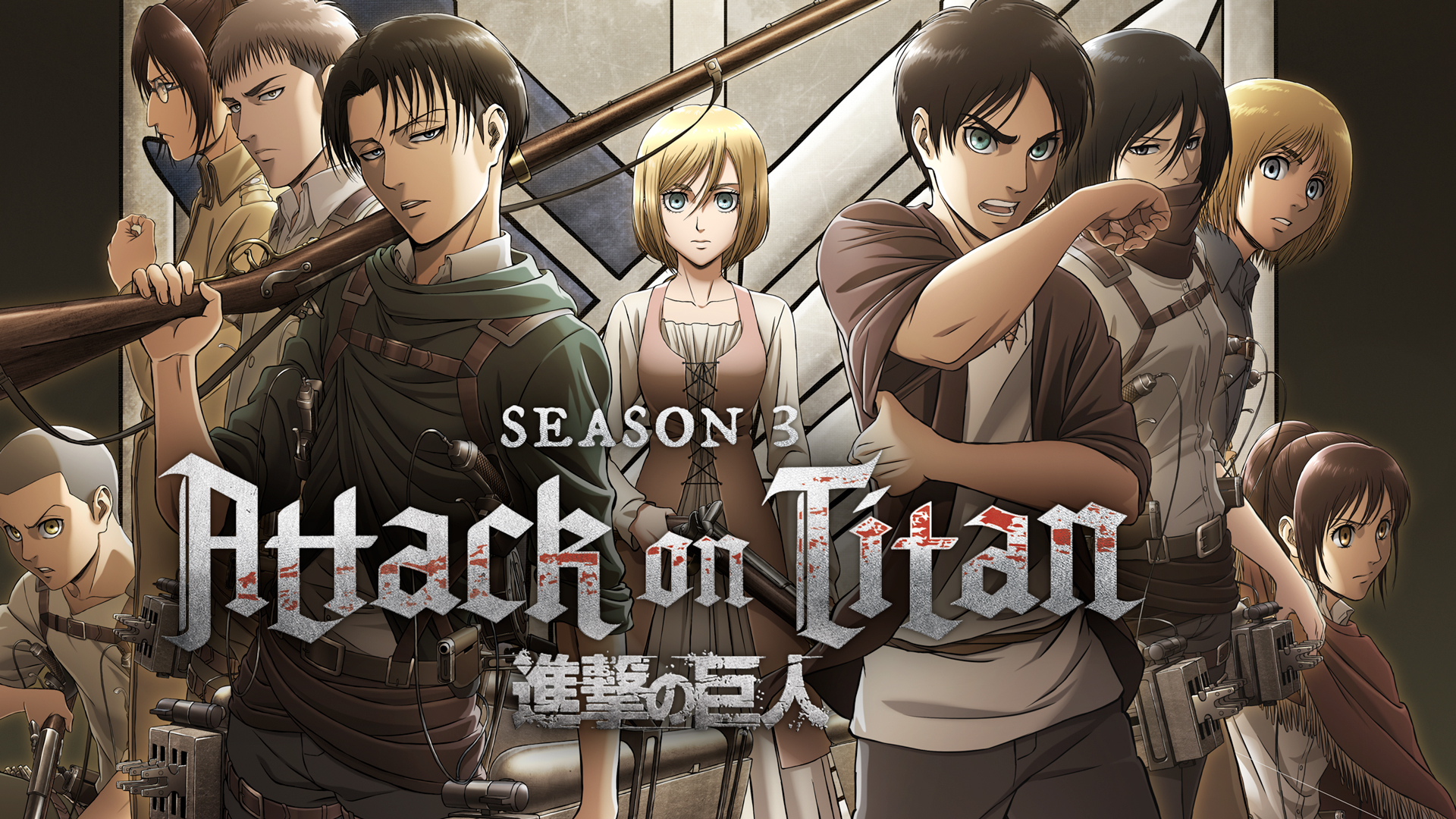
However, “Attack on Titan” is not without its criticisms. Some viewers have raised concerns about the pacing of the series, particularly in certain arcs where the plot slows down or becomes convoluted. Additionally, the series contains graphic violence and mature themes that may not be suitable for all audiences.
Attack on Titan” is a gripping and emotionally resonant anime series that has grab audiences worldwide with its epic scale, complex characters, and intense action.
With its masterful storytelling, stunning animation, and thought-provoking themes, it’s no wonder that “Attack on Titan” has become one of the most popular and critically acclaimed anime series of recent years.
2. Hunter x Hunter
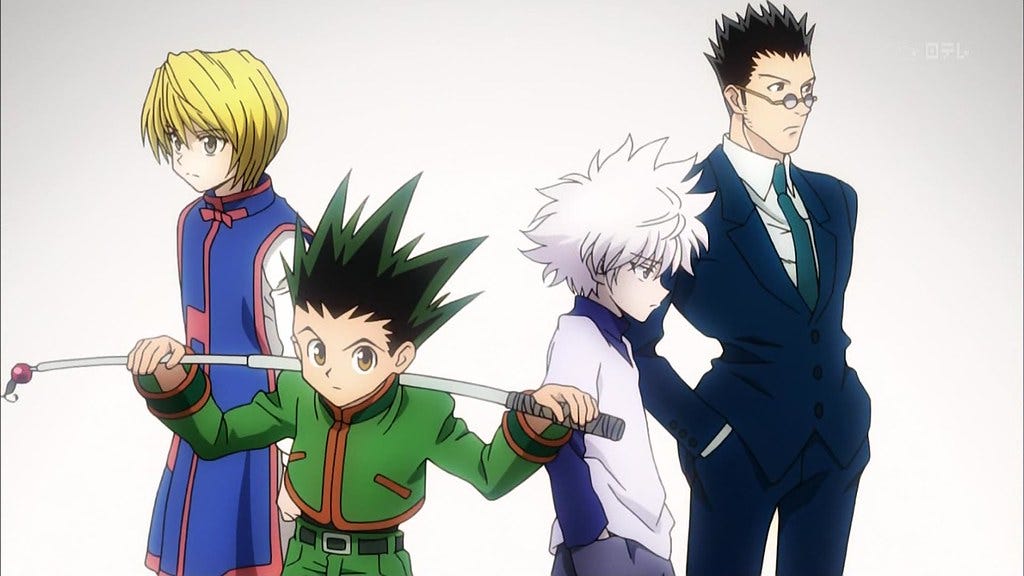
Madhouse’s rendition of Hunter x Hunter stands as a true masterpiece within the battle shonen genre. At its onset, the series introduces viewers to Gon, a young boy with dreams of following in his father’s footsteps to become a hunter.
Along his journey, he forms lasting bonds with friends while encountering formidable adversaries who challenge him at every turn. Yet, as the story unfolds, Hunter x Hunter defies convention, offering arcs that diverge from typical battle shonen tropes.
Beyond its unconventional narrative approach, the 2011 anime adaptation showcases breathtaking action sequences fueled by well-developed characters, a meticulously crafted power system, and Madhouse’s signature animation prowess. While not directly comparable to Demon Slayer, both series stand as pillars of excellence within the battle shonen genre, fascinating audiences with their gripping storytelling and immersive worlds.
“Hunter x Hunter” is a beloved anime series adapted from the manga of the same name written and illustrated by Yoshihiro Togashi. It follows the journey of a young boy named Gon Freecss who aspires to become a Hunter, a prestigious and elite member of society tasked with a wide range of tasks, from hunting rare creatures to finding treasures or even locating individuals.
As Gon goes on his quest to become a Hunter, he encounters friends, foes, and challenges that push him to his limits both physically and emotionally.
The series is known for its rich and diverse world-building, which is one of its greatest strengths. The world of “Hunter x Hunter” is filled with unique and imaginative elements, including exotic locations, fantastical creatures, and intricate systems of governance and power.
From the bustling metropolis of the Hunter Association headquarters to the treacherous depths of the Dark Continent, each new setting is meticulously crafted and adds depth to the narrative.
One of the standout aspects of “Hunter x Hunter” is its complex and well-developed characters. Gon is a lovable protagonist whose unwavering optimism and determination inspire those around him, but he is also flawed and prone to moments of recklessness.
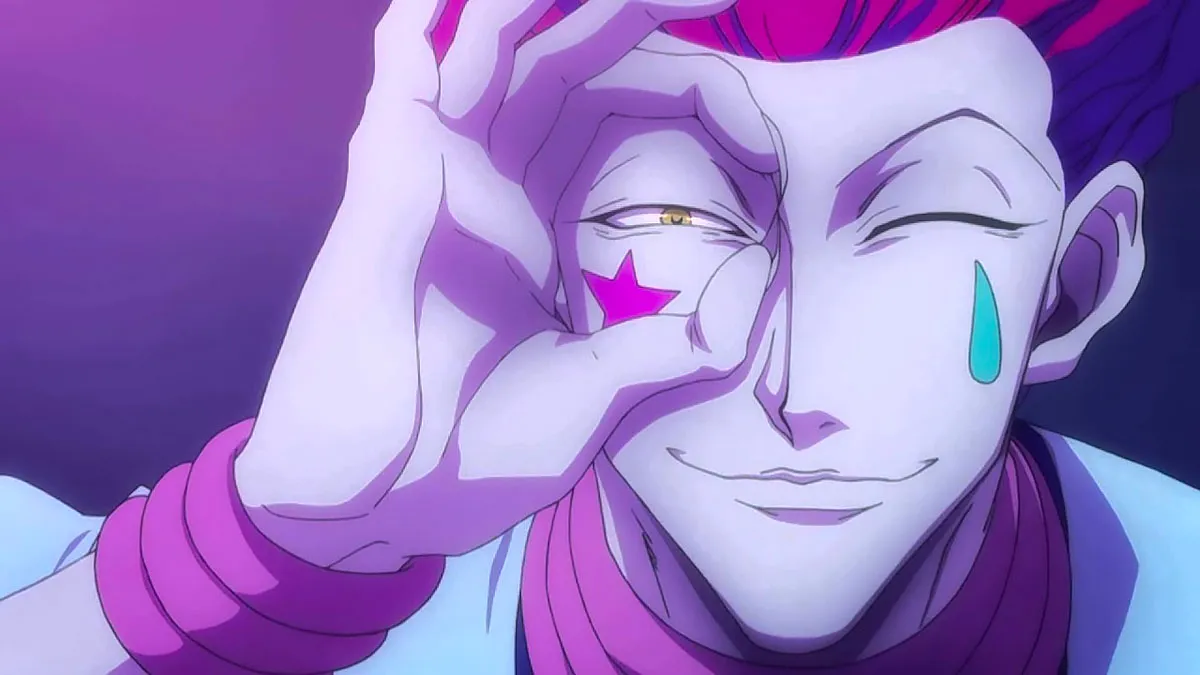
His companions, including the intelligent and resourceful Killua, the hot-headed and impulsive Leorio, and the enigmatic Kurapika, each bring their own unique strengths and weaknesses to the group dynamic. Throughout the series, these characters undergo significant growth and development as they face challenges, form alliances, and confront their own inner demons.
The series is also praised for its engaging and unpredictable plot. “Hunter x Hunter” seamlessly blends elements of adventure, action, mystery, and psychological drama to create a narrative that keeps viewers guessing at every turn. From thrilling battles against powerful adversaries to intricate schemes and political machinations, the series is filled with twists and turns that keep the audience invested in the story.
Another notable aspect of “Hunter x Hunter” is its exploration of complex themes and moral dilemmas. The series goes into topics such as the nature of power, the consequences of ambition, and the importance of friendship and loyalty. It raises thought-provoking questions about the nature of humanity and the lengths to which individuals will go to achieve their goals.
In addition to its compelling narrative and well-rounded characters, “Hunter x Hunter” features top-notch animation and action sequences. The fight scenes are beautifully choreographed and animated, showcasing the character’s unique abilities and powers in creative and visually stunning ways. The series also boasts a memorable soundtrack that enhances the mood and atmosphere of each scene.
However, “Hunter x Hunter” is not without its flaws. The series has been criticized for its inconsistent release schedule, with frequent hiatuses that have left fans waiting years for new chapters of the manga and episodes of the anime. Additionally, some viewers have found certain arcs to be slow-paced or overly complex, particularly during the later portions of the series.
Hunter x Hunter is a masterpiece of anime storytelling that has earned its reputation as a modern classic. With its rich world-building, complex characters, engaging plot, and stunning animation, it’s a must-watch for fans of adventure, action, and fantasy anime.
1. Ninja Scroll
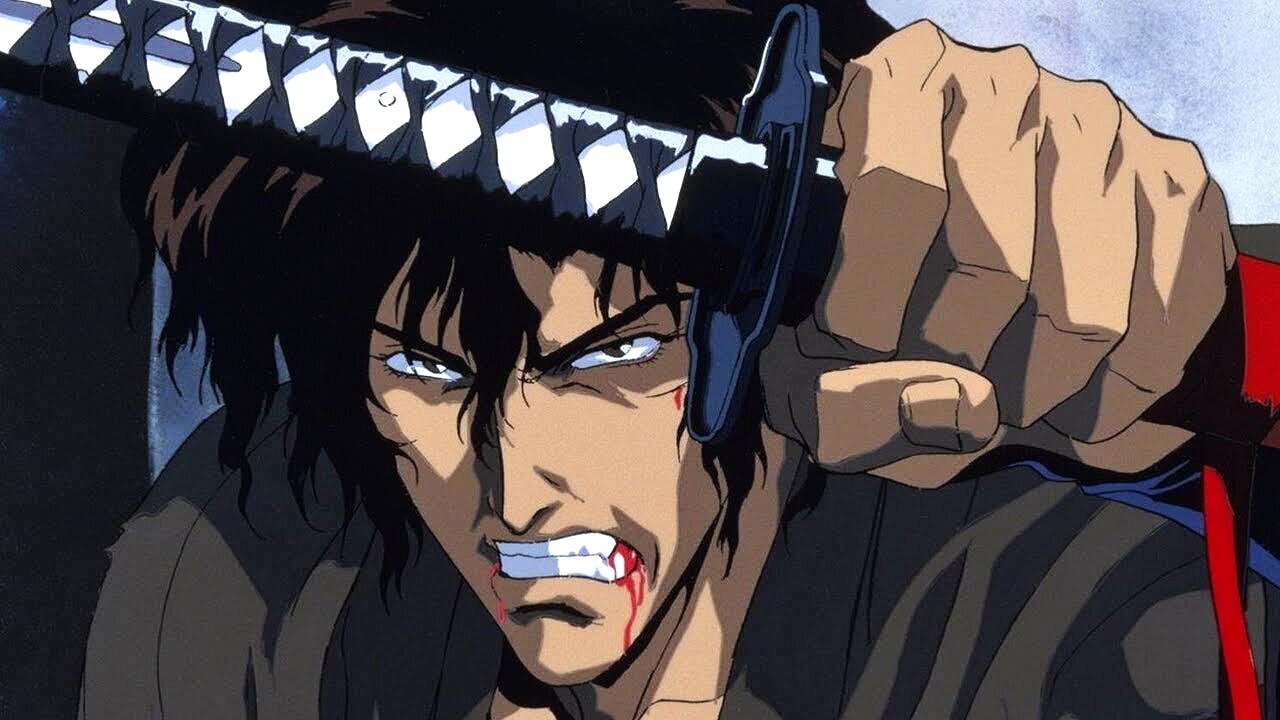
For those seeking a starting point among these recommendations, Ninja Scroll is an excellent choice. This ’90s anime movie follows the exploits of Kibagami Jubei as he engages in brutal battles against eight ninjas endowed with monstrous abilities.
While not suitable for younger viewers due to its mature content, Ninja Scroll offers a thrilling experience for Demon Slayer fans craving a more mature narrative. The film’s action sequences remain incredibly fascinating and stand the test of time.
Although a sequel anime series was released in the early 2000s, it may not reach the same heights as the original film. However, for those eager to look deeper into the universe of Ninja Scroll, it still offers an enjoyable experience. Ultimately, the original movie remains a benchmark for action in anime, and its enduring appeal has solidified its status as a classic over the past few decades.
“Ninja Scroll” is a classic anime film that has left an indelible mark on the industry since its release in 1993. Directed by Yoshiaki Kawajiri and produced by Madhouse studio “Ninja Scroll” is a visceral and action-packed journey set in feudal Japan, blending elements of historical fiction, fantasy, and supernatural horror.
The story follows Jubei Kibagami, a wandering swordsman with exceptional skills and a troubled past. After crossing paths with a female ninja named Kagero, Jubei becomes embroiled in a deadly conspiracy involving the Eight Devils of Kimon, a group of powerful and malevolent warriors serving a corrupt government official named Gemma.
As Jubei and Kagero join forces to confront the Devils and unravel the truth behind their sinister plot, they must confront their own inner demons and face formidable adversaries in a battle for survival.
At the heart of “Ninja Scroll” is its nice and fast-paced narrative. The film wastes no time plunging viewers into its dark and atmospheric world, filled with intrigue, betrayal, and brutal violence.

Each encounter with the Eight Devils of Kimon is a thrilling spectacle, showcasing their unique abilities and pushing Jubei and Kagero to their limits. From epic sword fights to deadly ninjutsu techniques, the action sequences are masterfully choreographed and animated, drawing viewers into the heart of the conflict.
In addition to its adrenaline-fueled action, “Ninja Scroll” is also known for its memorable characters. Jubei is a stoic and formidable protagonist, haunted by his past and driven by a sense of justice. Kagero, meanwhile, is a complex and tragic figure, cursed with a deadly poison that makes her touch lethal to others.
The dynamic between Jubei and Kagero forms the emotional core of the film, as they navigate their fraught relationship and forge a bond born out of mutual respect and understanding.
The villains of “Ninja Scroll” are equally compelling, each possessing their own distinct personalities and motivations. From the sadistic and monstrous Tessai to the seductive and deadly Benisato, the Eight Devils of Kimon are a formidable and diverse group of adversaries that pose a significant threat to our heroes. Their designs are grotesque yet nice, reflecting the film’s blend of historical fantasy and supernatural horror.
Visually, “Ninja Scroll” is a feast for the eyes, with stunning animation and detailed artwork that brings its world to life. The character designs are iconic, with bold colors and exaggerated features that evoke the style of traditional Japanese woodblock prints. The backgrounds are richly textured, capturing the beauty and brutality of feudal Japan with intricate detail.
However, “Ninja Scroll” is not without its criticisms. Some viewers have pointed out elements of the film’s plot and dialogue that may feel dated or clichéd by modern standards. Additionally, the film’s graphic violence and sexual content may not be suitable for all audiences.
Ninja Scroll remains a classic of the anime genre, revered for its nice story, memorable characters, and breathtaking animation. Its influence can be seen in countless other works of anime and has left an enduring legacy that continues to resonate with fans over two decades after its release.
Memes of the Day
Ane Naru Mono Zenshuu 1

